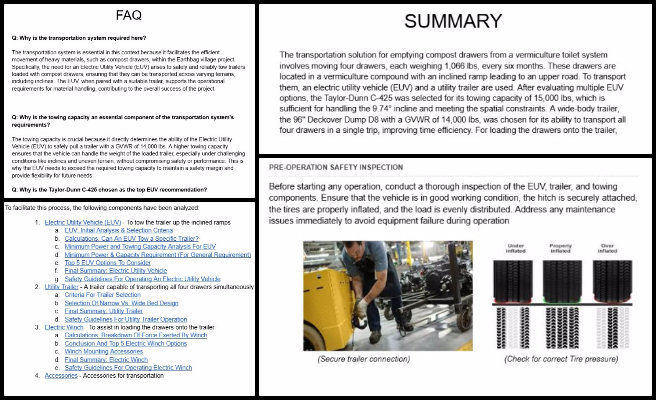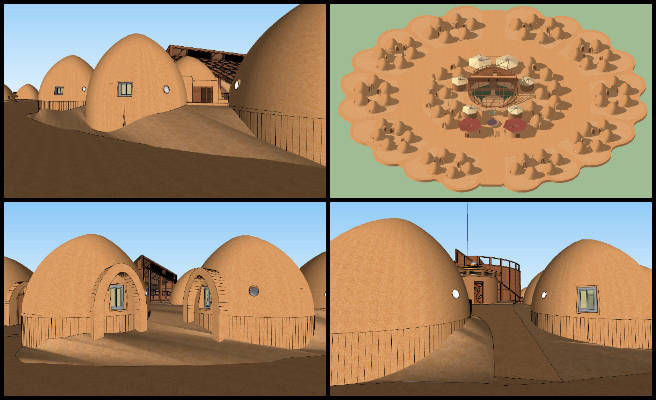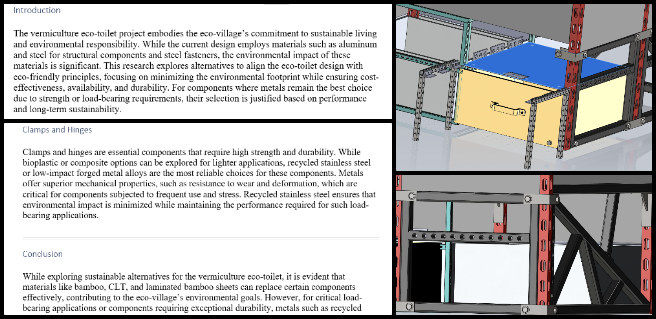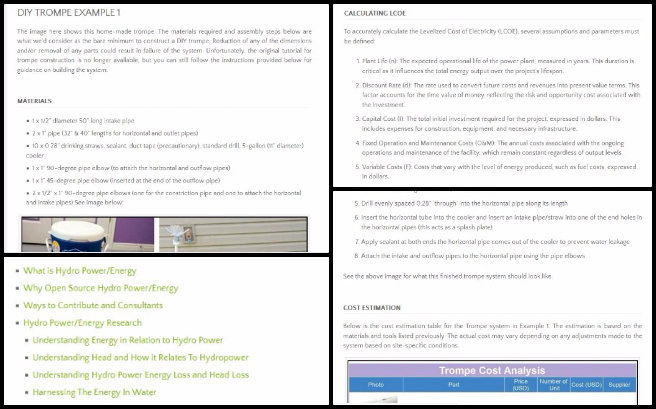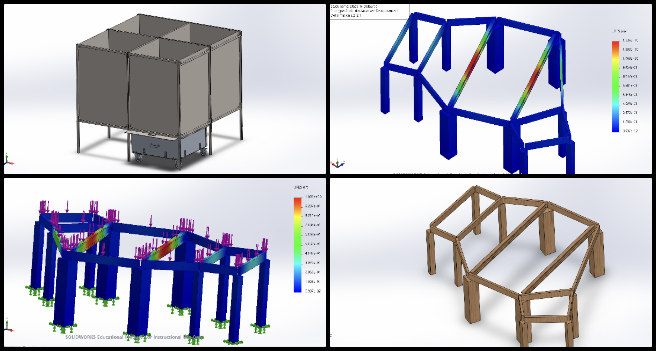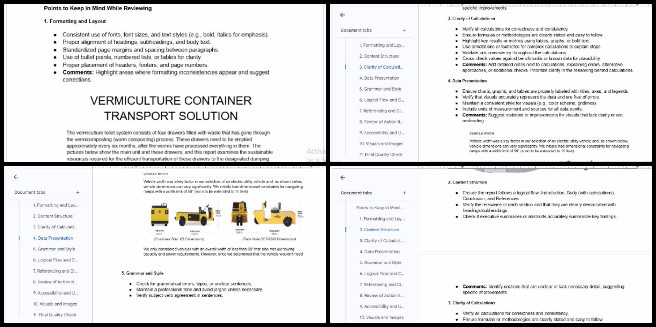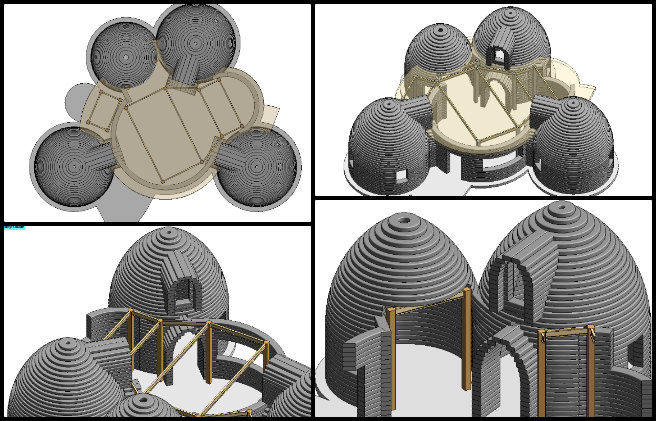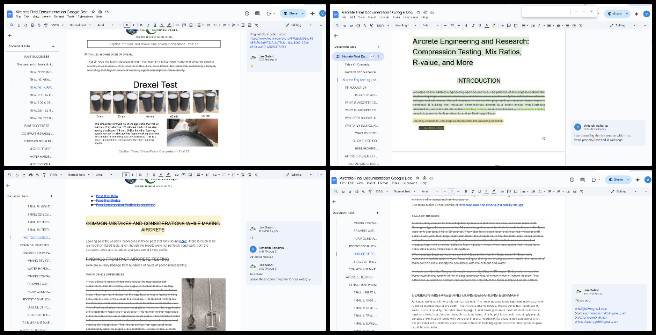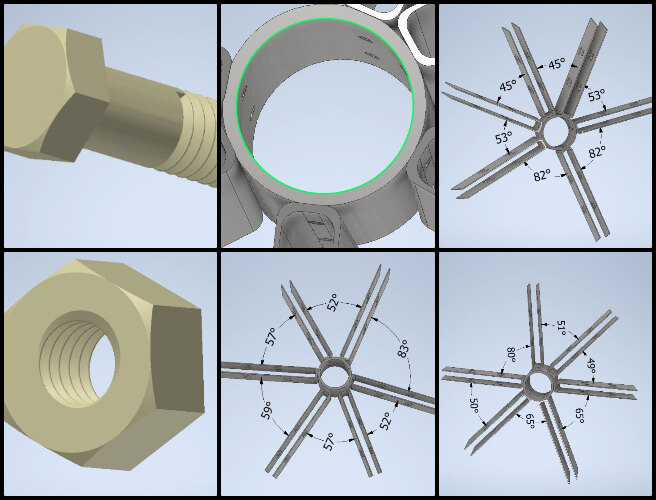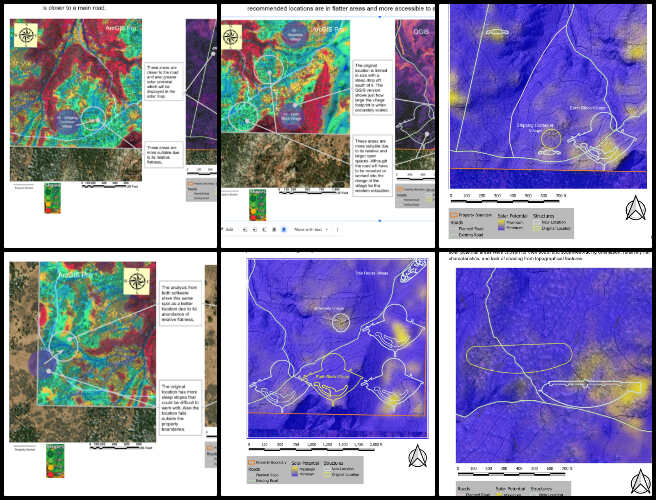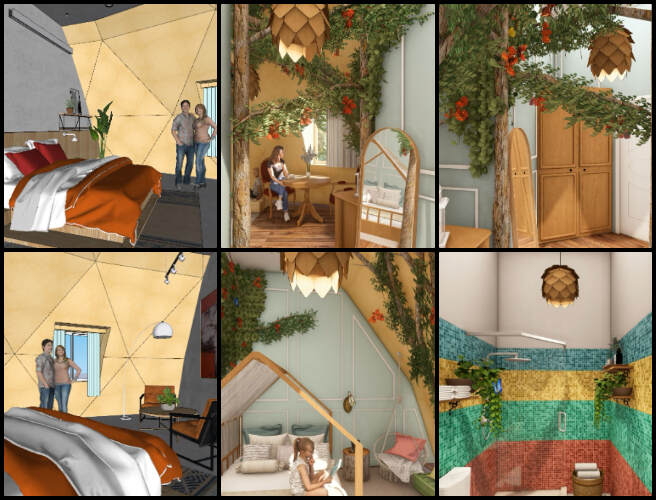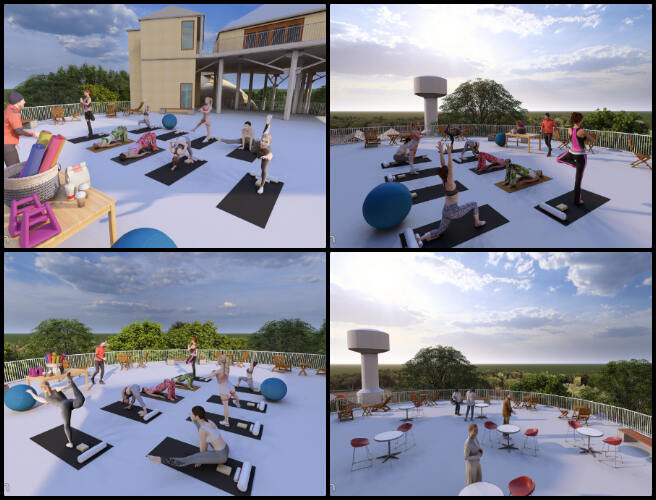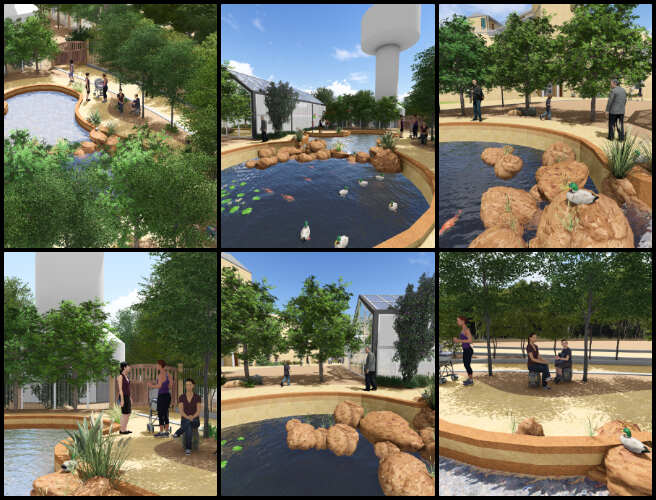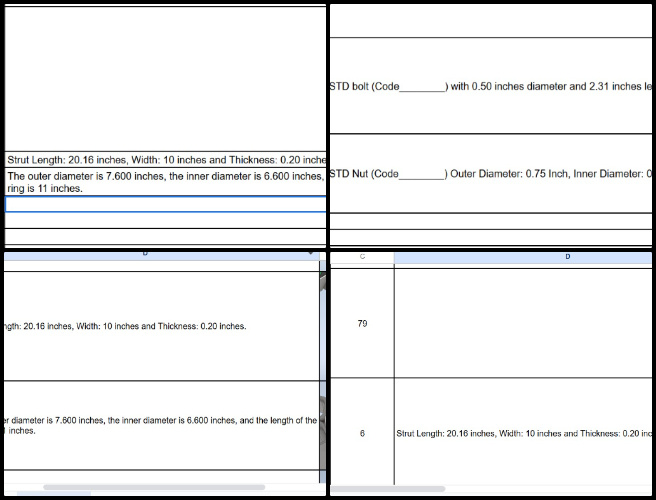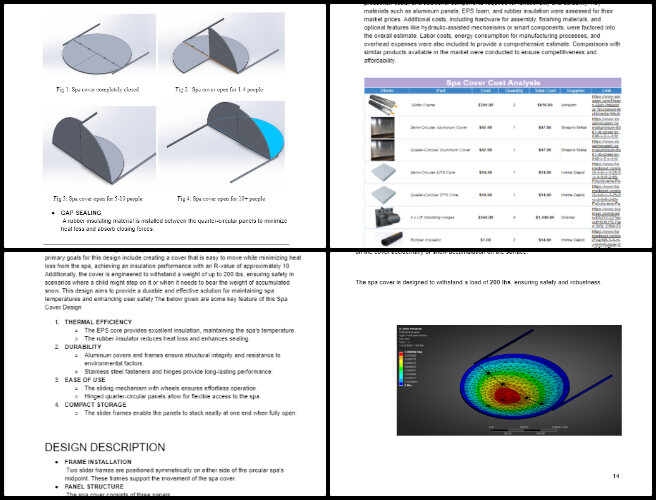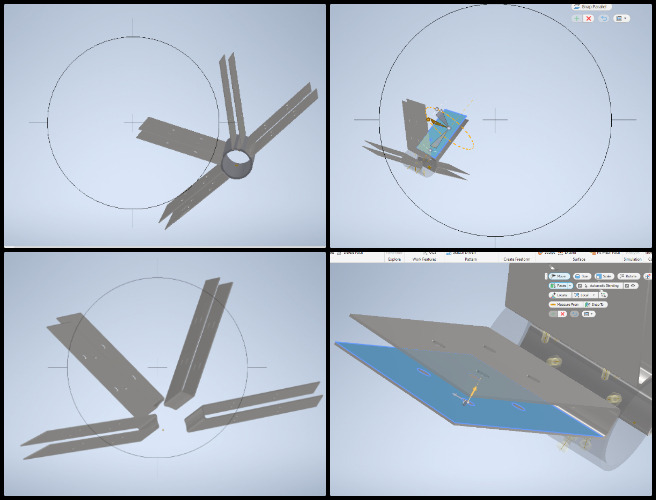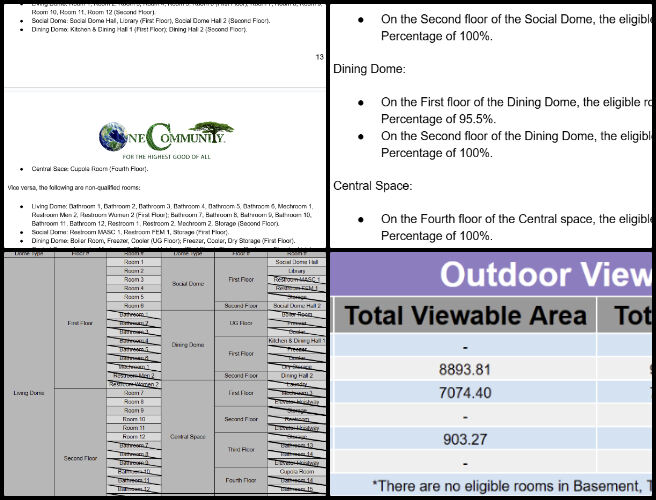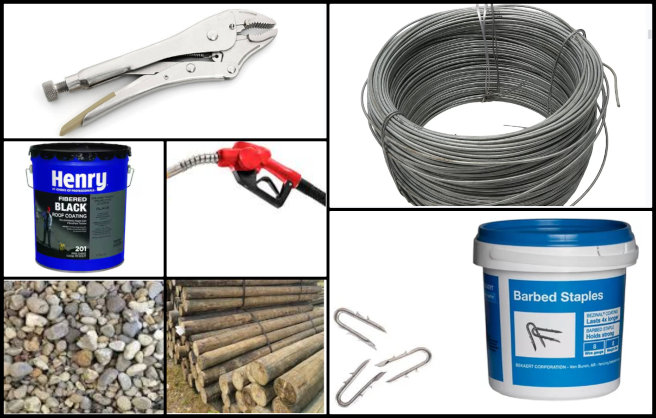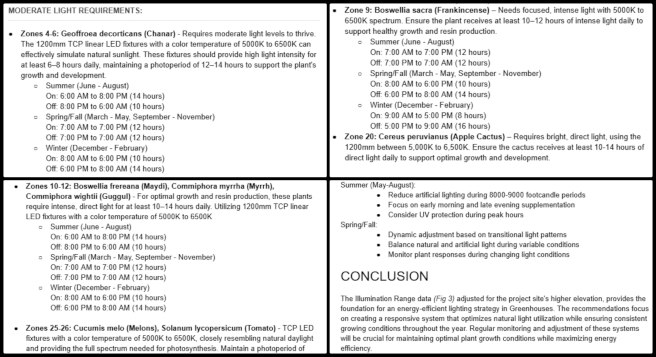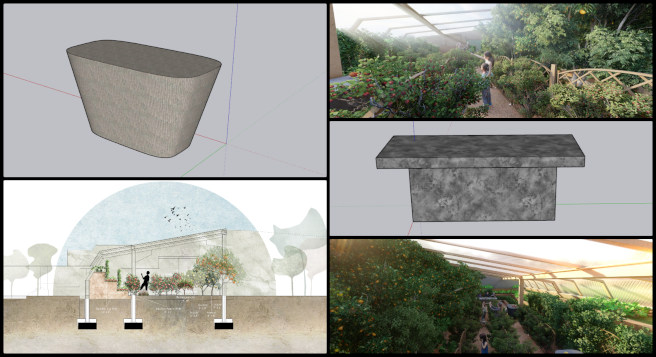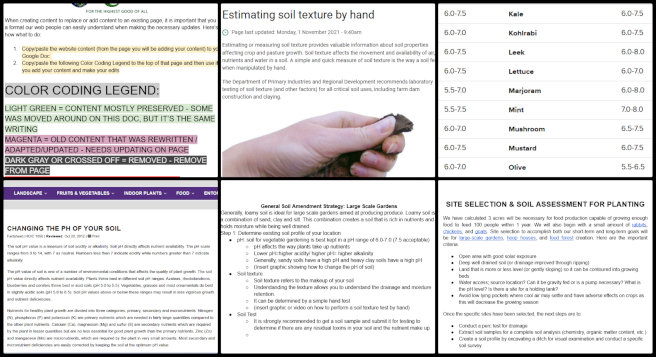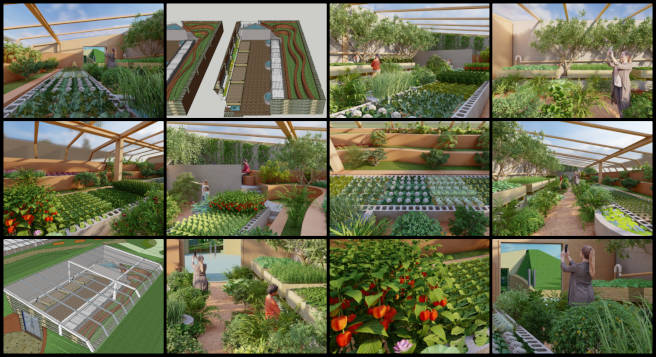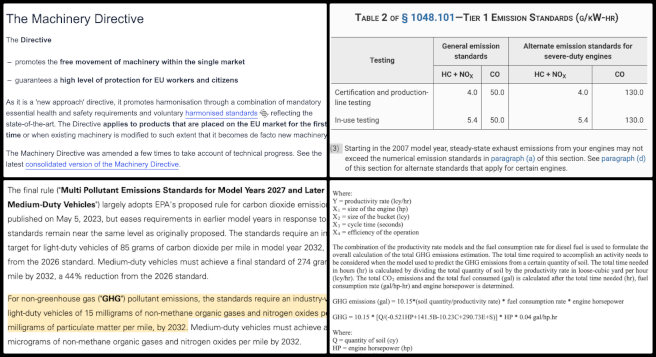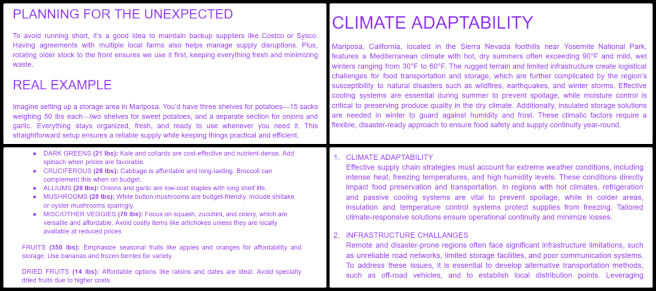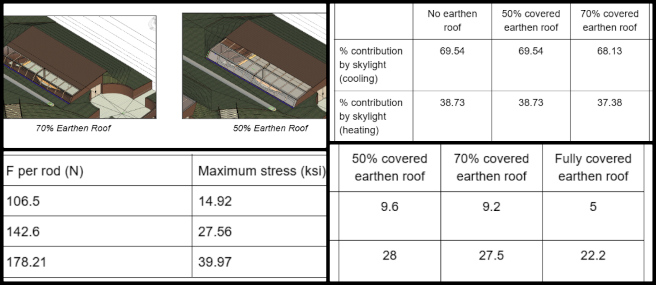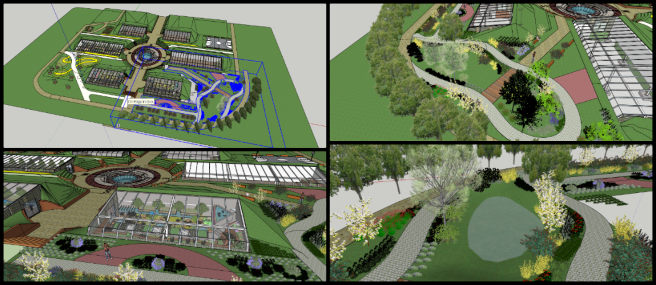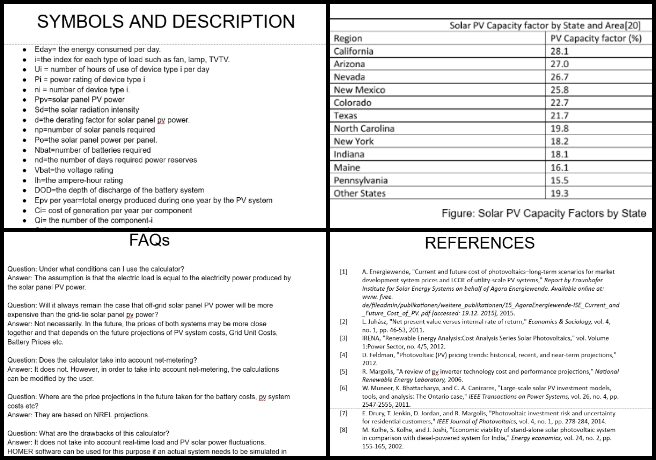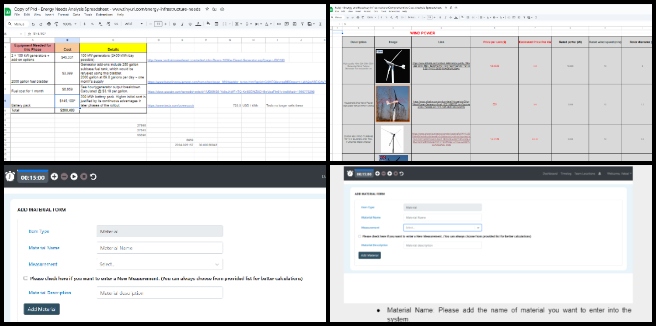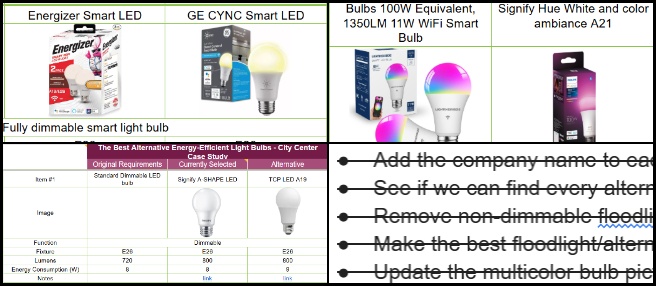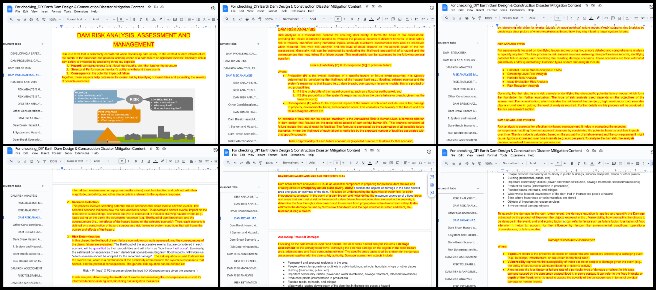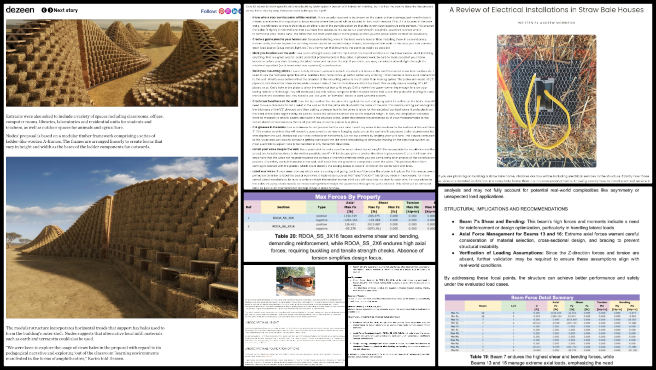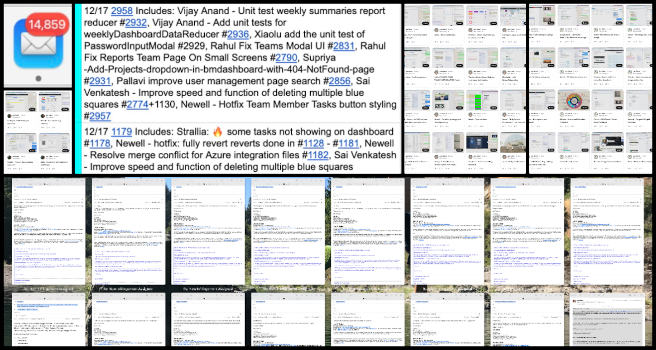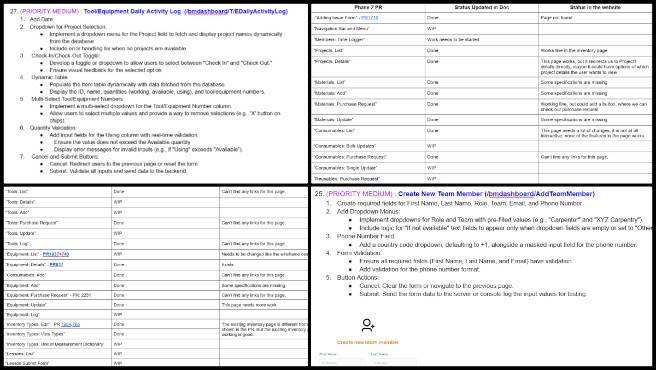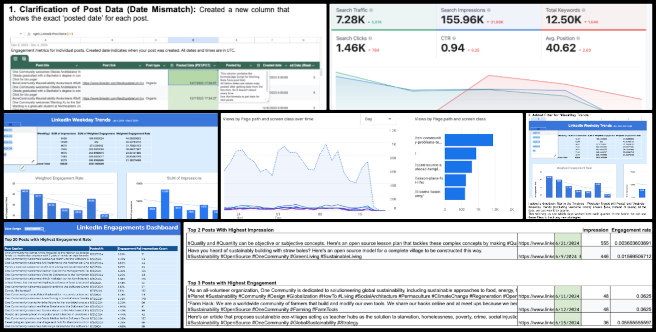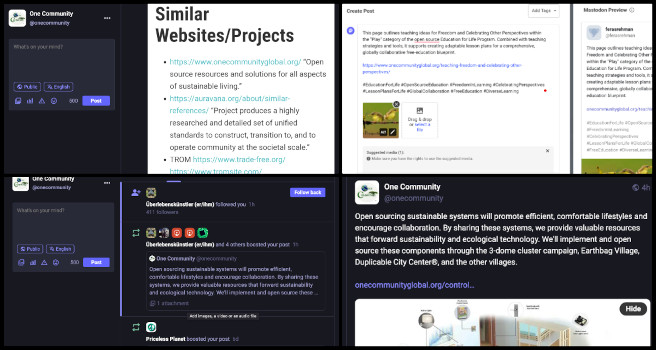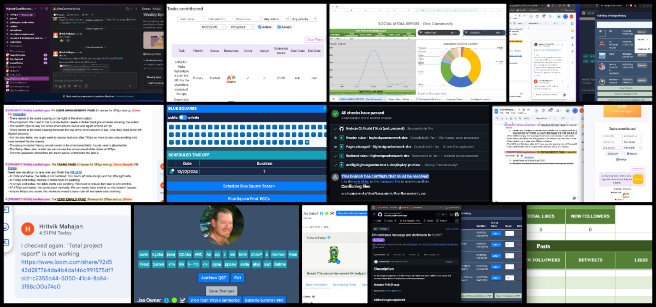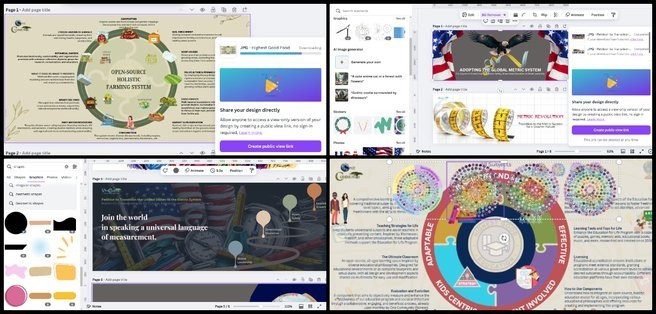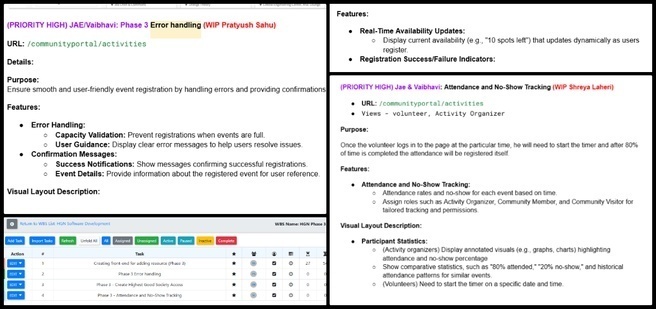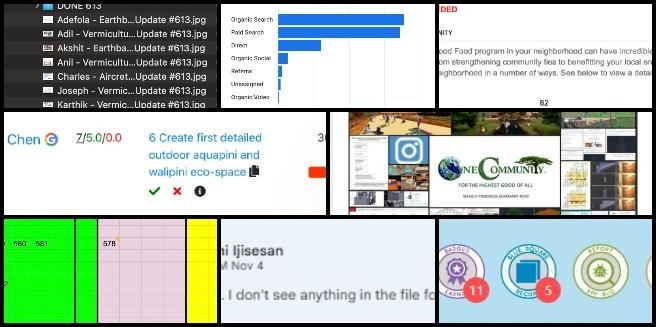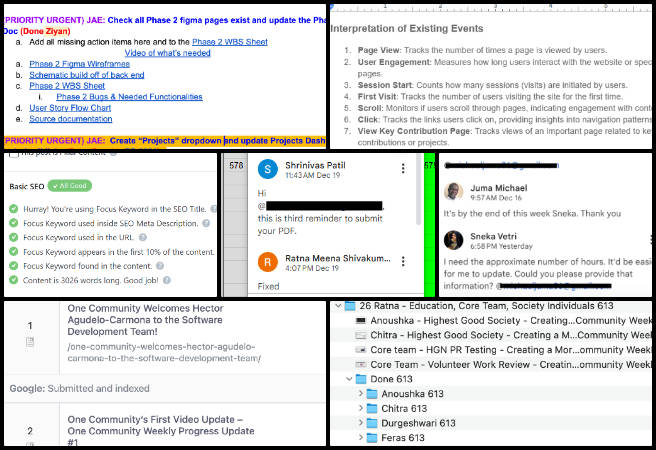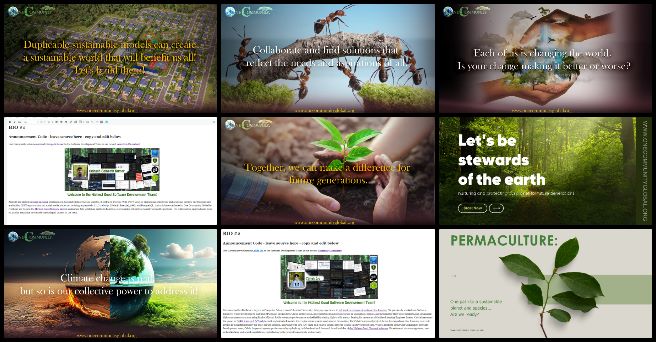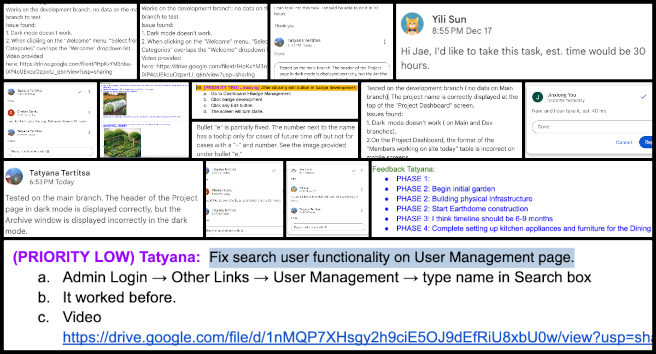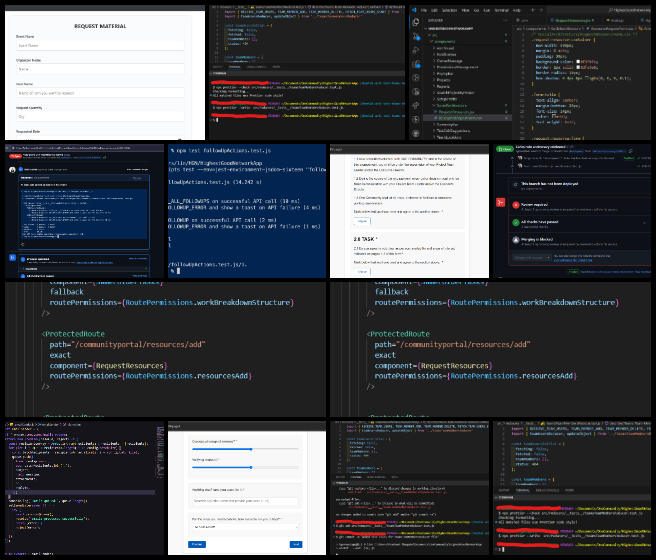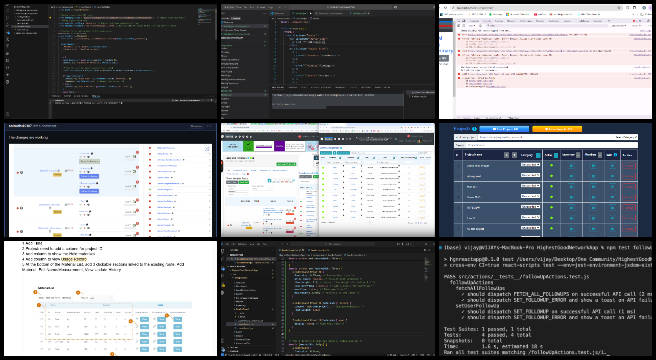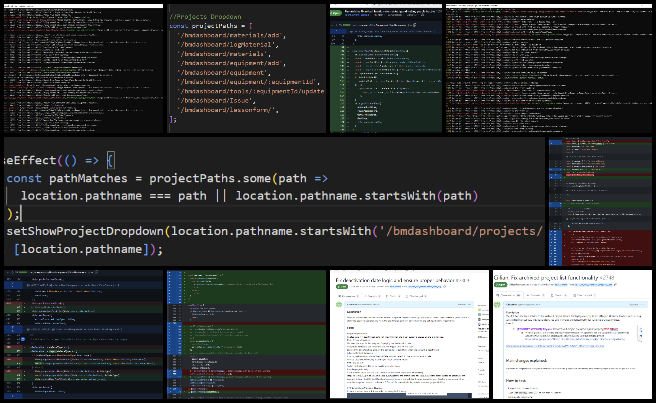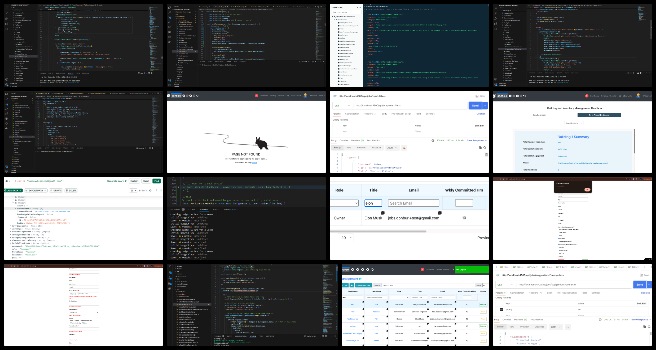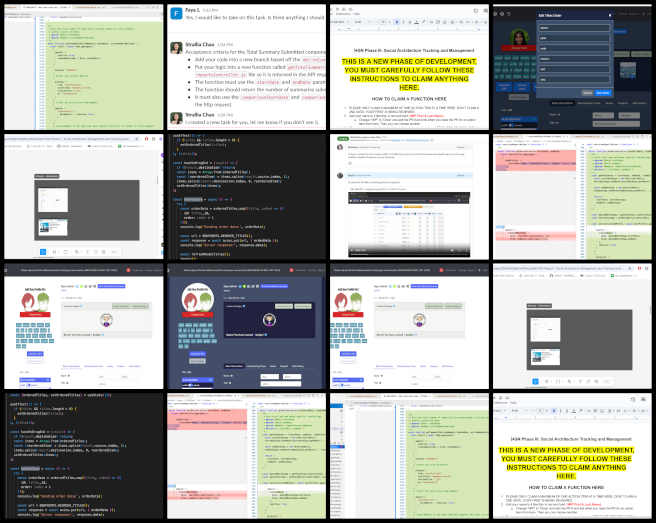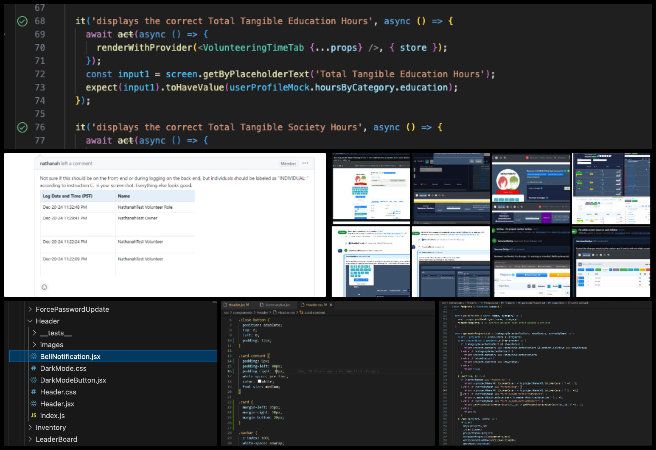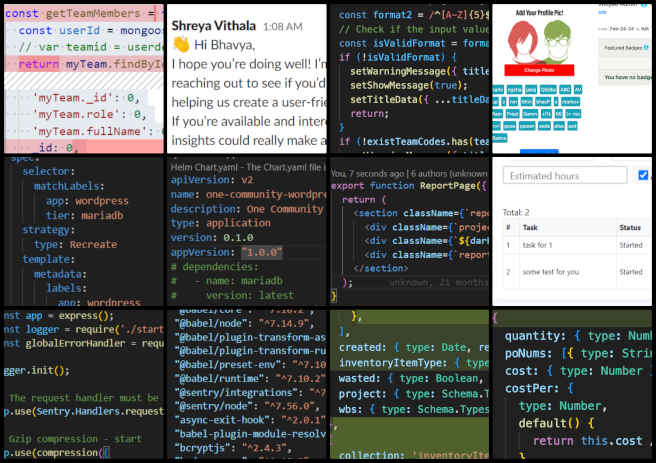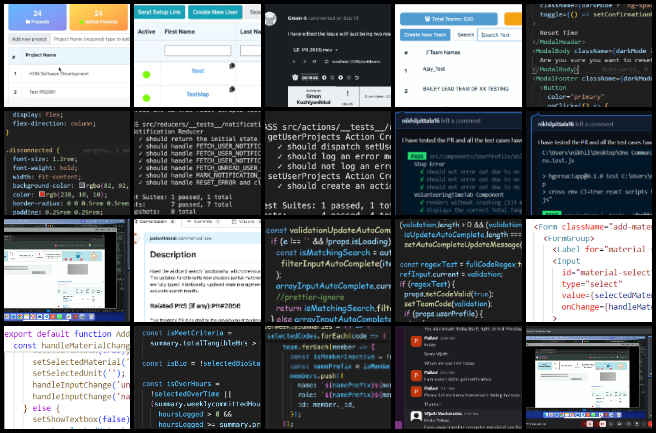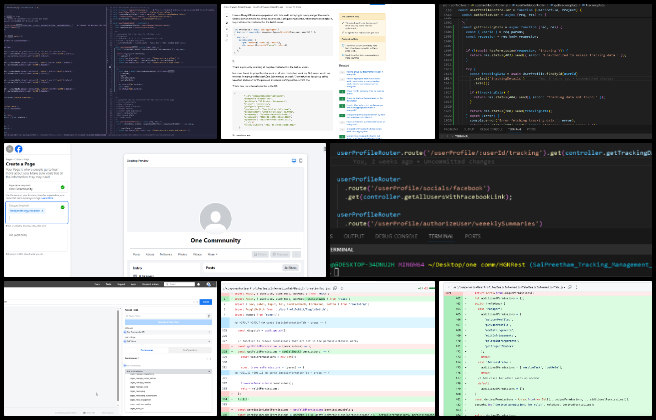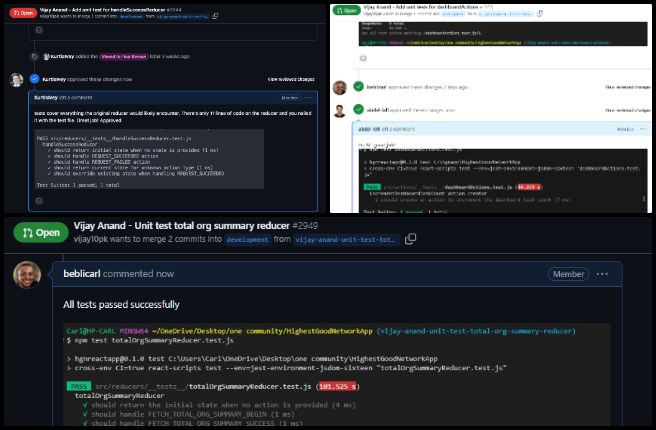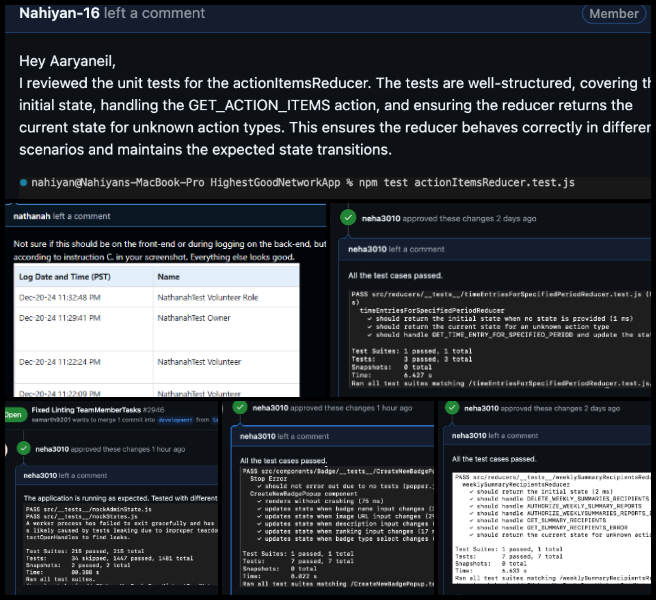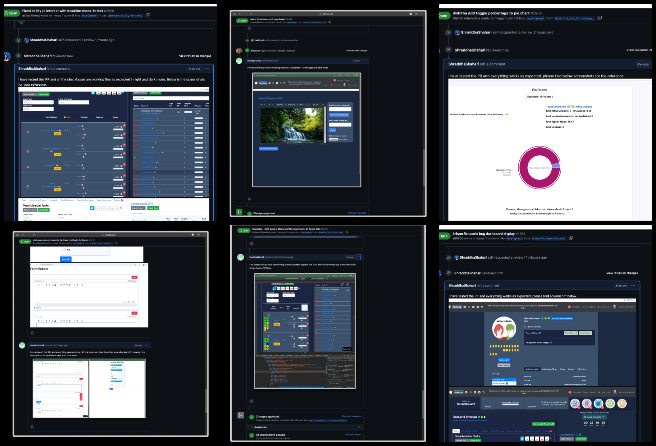Sustainability as a Foundation for Luxury Community Living – One Community Weekly Progress Update #614
Sustainability as a foundation for luxury community living has never been more achievable or essential as it is now. One Community is integrating sustainable approaches to food, energy, housing, education, and economics. Our all-volunteer team is creating a self-replicating model that supports fulfilled living and global stewardship practices. Through open sourcing and free sharing every aspect of our work, we aim to establish a global network of teacher/demonstration hubs focused on regenerating our planet and evolving sustainability for “The Highest Good of All“.
- Here’s our project overview
- Here’s our world-change methodology
- Here’s how this becomes self-replicating
- Here’s how we are open source and free-sharing all the do-it-yourself designs
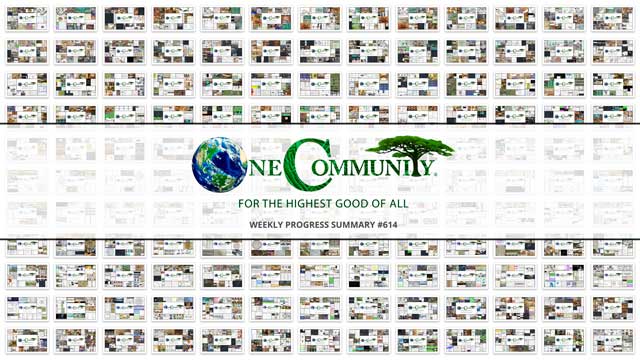
OUR MAIN OPEN SOURCE HUBS
Click on each icon to be taken to the corresponding Highest Good hub page.
One Community’s physical location will forward this movement as the first of many self-replicating teacher/demonstration communities, villages, and cities to be built around the world. This is the December 23rd, 2024 edition (#614) of our weekly progress update detailing our team’s development and accomplishments:
Sustainability as a Foundation
for Luxury Community Living
One Community Progress Update #614
DONATE | COLLABORATE | HELP WITH LARGE-SCALE FUNDING
CLICK HERE IF YOU’D LIKE TO RECEIVE AN EMAIL EACH WEEK WHEN WE RELEASE A NEW UPDATE
YOU CAN ALSO JOIN US THROUGH SOCIAL MEDIA
ONE COMMUNITY WEEKLY UPDATE DETAILS
HIGHEST GOOD HOUSING PROGRESS
 One Community is creating sustainability as a foundation for luxury community living through Highest Good housing that is artistic and beautiful, more affordable, more space efficient, lasts longer, DIY buildable, and constructed with healthy and sustainable materials:
One Community is creating sustainability as a foundation for luxury community living through Highest Good housing that is artistic and beautiful, more affordable, more space efficient, lasts longer, DIY buildable, and constructed with healthy and sustainable materials:
- Learn about: Our Upcoming Crowdfunding Campaign
- Learn about the different village models: 7 Sustainable Village Models
- Visit the open source portals for the first two: Earthbag Village OS Hub | Straw Bale Village OS Hub
This week, Adil Zulfiquar (Engineer) continued working on the Vermiculture Toilet engineering designs. The report was reformatted to align with the webpage’s formatting requirements, with adjustments made to sections and alignment. A summary was added to give an overview of the report’s content. A new section was also included to address frequently asked questions, providing further clarification and insights into the transportation solution. The Earthbag Village is the first of 7 to be built as the housing component of One Community’s open source model for sustainability as a foundation for luxury community living. See below for some of the pictures related to work.
Akshit Sethi (Architectural Designer) continued working on updating the Earthbag Village SketchUp and AutoCAD layouts. Akshit refined the SketchUp model for the domes to align with the design document. Tasks included adjusting contour shapes, modifying door entries, incorporating arches, and updating window dimensions based on the specifications outlined in the “4 Dome CD Progress” sheet for all living domes. These updates ensured the model reflected the detailed design guidelines and maintained consistency with the project’s requirements. The Earthbag village is the first of 7 villages to be built as part of One Community’s open source model for sustainability as a foundation for luxury community living. See his work in the collage below.
Anil Karathra (Mechanical Engineer) continued advancing the engineering and design of the Vermiculture Toilet for the Earthbag Village project. This week’s work focused on refining the eco-toilet design and structural engineering, including finalizing the drawer and slider mechanisms, conducting finite element analysis (FEA) on the main structure, and updating the master task list to ensure clear tracking of progress and next steps. Research continued into alternative sustainable materials for the eco-toilet structure, building on previous findings. During the weekly team meeting, designs were collaboratively reviewed and adjusted. Progress updates and screenshots were documented and shared via Dropbox. This commitment to sustainability as a foundation for luxury community living drives the development of innovative, eco-friendly solutions that balance environmental responsibility with high standards of functionality. See below for pictures related to this work.
Charles Gooley (Web Designer) continued working on the Aircrete Engineering and Research: Compression Testing, Mix Ratios, R-value, and More page. Charles updated the Hydro Power/Energy Setup and Maintenance materials, emphasizing methods to help users understand mini and micro hydro-energy design options, setup processes, maintenance needs, and associated costs for replication. The updates included adding a formula for calculating the Levelized Cost of Electricity and incorporating six new case study resources to expand and enhance the content. Aircrete is an alternative being explored for the Earthbag Village, a foundational part of One Community’s open-source model for sustainability as a foundation for luxury community living. Take a look at some of the work in the images below.
Karthik Pillai (Mechanical Engineer) continued helping finish the Vermiculture Toilet engineering and helping with the Earthbag Village 4-dome home roof plan. This week, Karthik focused on refining the analysis of the I-section beams, making initial structural design adjustments, including modifications to the layout and treating each joist as an individual member. The analysis showed a deflection of approximately one inch, exceeding the acceptable safety threshold, necessitating further evaluation to meet safety standards. Concurrently, Karthik collaborated with the vermiculture team to finalize the vermiculture toilet structure design. The design is nearing completion, with additional updates pending from Jae regarding revised details. The Earthbag Village is the first of 7 to be built as the housing component of One Community’s open source model for sustainability as a foundation for luxury community living. See the work in the collage below.
Manjiri Patil (Mechanical Design Engineer) started helping to complete the Vermiculture Toilet engineering and designs. This week, Manjiri created a guide for reviewing One Community reports, focusing on consistency in formatting, logical content flow, and accurate calculations. The guide outlines steps for clear data presentation, proper referencing, grammar checks, and incorporating effective visuals. It aims to enhance accessibility, usability, and actionable outcomes, with a final quality check to ensure high standards are maintained. This approach for sustainability as a foundation for luxury community living supports the development of innovative solutions that are both environmentally friendly and effective. See below for pictures related to this work.
Michaela Silva (Architect) continued working on the interior details for the Earthbag Village 4-dome home design. Michaela focused on the Revit model, modeling each individual earthbag layer separately. This approach allowed her to identify potential conflicts between the beams and the earthbag layers. It also supported the analysis of the roof’s structural boundary and the evaluation of different column locations. The Earthbag Village is the first of 7 villages to be built as part of One Community’s open source model for sustainability as a foundation for luxury community living. See her work in the collage below.
Vimarsh Acharya (Engineering Manager and Technical Reviewer) continued working on identifying sustainability-related arguments covering the Highest Good Lifestyle Considerations and sourcing quality research to support each one. This week, Vimarsh completed a final review of the document titled Aircrete Engineering and Research: Compression Testing, Mix Ratios, R-value, and More, addressing minor corrections identified during the process. The web page version of the document was also reviewed to ensure consistency and accuracy. A cross-check between the final document and the web version verified that all necessary updates were incorporated and the content aligned across both formats. The One Community model, which combines forward-thinking education with sustainably built classrooms like this, is an excellent example of sustainability as a foundation for luxury community living. See the collage below for his work.
DUPLICABLE CITY CENTER PROGRESS
 One Community is creating sustainability as a foundation for luxury community living through a Duplicable and Sustainable City Center that is LEED Platinum certified/Sustainable, can feed 200 people at a time, provide laundry for over 300 people, is beautiful, spacious, and saves resources, money, and space:
One Community is creating sustainability as a foundation for luxury community living through a Duplicable and Sustainable City Center that is LEED Platinum certified/Sustainable, can feed 200 people at a time, provide laundry for over 300 people, is beautiful, spacious, and saves resources, money, and space:
- Learn about this building and it’s function: Duplicable City Center Open Source Hub
Arnob Mutsuddi (Mechanical Engineer) continued working on Duplicable City Center structural engineering model and details. His work focused on the DCC Hub Connector BOM spreadsheet, including capturing relevant pictures for documentation. Initial efforts began with the overall spreadsheet and proceeded to row-specific tasks, taking pictures for the row 2 connector. Work was completed for the row 4 and row 6 connectors, including their associated images. Additionally, progress on the current project was reviewed during a team meeting. The Duplicable City Center is a foundational part of One Community’s open-source model, which excels in the mission of sustainability as a foundation for luxury community living. This approach is integral to their mission of sustainability as a foundation for luxury community living through innovative and scalable solutions. See some of this work in the pictures below.
Chris Blair (GIS Technician/Horticulturist) continued working with GIS data as part of One Community’s Permaculture Design that includes the location of the Duplicable City Center. He worked with GIS data as part of One Community’s Permaculture Design. He continued drafting a comparison of the results produced by QGIS and ArcGIS Pro, adding side-by-side graphics to illustrate differences and updating his Google document with additional content. He also created updated maps showing new village locations and modifications to road layouts. Within One Community’s open-source framework, the Duplicable City Center plays a central role in sustainability as a foundation for luxury community living. The images below showcase some of this work.
Faeq Abu Alia (Architectural Engineer) continued his work on the Duplicable City Center rental rooms. He completed rendering Room 12 on Lumion, focusing on refining the walkthrough video by editing materials, adjusting decorations, and fine-tuning proportions. Feedback from the recent review was incorporated to align the design with project requirements, enhancing the room’s visual presentation. Additionally, Faeq finished working on Room 10 in SketchUp, ensuring the design meets the project’s functional and aesthetic goals. The design is now prepared for the next phase, which will involve rendering in Lumion. The Duplicable City Center represents a fundamental element of One Community’s open-source approach, dedicated to the mission of sustainability as a foundation for luxury community living. View examples of this work in the pictures provided below.
Mohammed Maaz Siddiqui (Architect) continued working on the cupola renders for the Duplicable City Center project. He focused on searching, downloading, and optimizing 3D models of people and objects to be included in the scene for the sundeck. His work involved developing a sundeck scene that would showcase various activities, including group exercises like yoga and gym workouts, as well as events like sundowner parties. After creating the basic scene for the sundeck, he worked on integrating the models and positioning them to demonstrate how the space could be utilized for these different activities. The rendering process took considerable time due to the large size of the 3D models. Within One Community’s open-source framework, the Duplicable City Center plays a central role in the mission of sustainability as a foundation for luxury community living. The images below showcase some of this work.
Nimika Devi (Architect) continued her contributions to the landscape design and development of the Duplicable City Center‘s urban farm. Her work focused on the pond area near the greenhouse, adding activities and incorporating a variety of plants, grasses, and trees into the design. Fish were added to the pond, along with ducks in and around the area, to enhance the setting. HD-quality renders were exported, and adjustments were made to the elements based on the render output. Additionally, corrections were applied to some elements and activities in the barn area. Within One Community’s open-source framework, the Duplicable City Center plays a central role in the mission of sustainability as a foundation for luxury community living. The images below showcase some of this work.
Rachan Rao (Project Manager) continued his work with Vatsal, assisting him with the cost analysis for Off-Grid energy implementation in the HGE project. He provided the Duplicable City Center team with the spreadsheet to update with images of the U-Hub connector. He also contributed by adding the U-Hub description and other details to the spreadsheet. Additionally, Rashan coordinated with the team regarding their weekly task updates and other tasks to be completed next week. Within One Community’s open-source framework, the Duplicable City Center plays a central role in the mission of sustainability as a foundation for luxury community living. The images below showcase some of this work.
Sanket Basannavar (Mechanical Engineer) continued working on the Duplicable City Center spa cover as part of the City Center Natural Pool and Eco-spa Designs. He completed the cost analysis for the spa cover, comparing it to the prices of aluminum spa covers currently available in the market. The analysis showed that while the costs are similar, the market-available covers are significantly smaller in size compared to the project’s requirements. Additionally, the report was reformatted based on provided suggestions, ensuring it meets the desired structure and presentation standards. Within One Community’s open-source framework, the Duplicable City Center plays a central role in sustainability as a foundation for luxury community living. The images below showcase some of this work.
Tasmia Hasan (Design Engineer) continued her work on the structural engineering of the Duplicable City Center. She worked on incorporating angle changes to the row 3 connector but encountered challenges with removing the screws, which required exploring alternative approaches. She collaborated with the team to identify a different method and began implementing modifications to the older model. Additionally, Tasmia started adding detailed images to the measurement spreadsheet. As a foundational component of One Community’s open-source strategy, the Duplicable City Center is designed for sustainability as a foundation for luxury community living. You can see examples of this work in the following images.
Yancong E (Architectural Designer) continued working on the Duplicable City Center project. He updated the current tutorial format and content, creating several pie charts in the Outdoor View Calculation section to better visualize data and conclusions based on Jae’s feedback. Additionally, Yancong began analyzing the building profiles (section drawings) to align with the USGBC’s requirements for quality views credits. Within One Community’s open-source framework, the Duplicable City Center plays a central role in the mission of sustainability as a foundation for luxury community living. The images below showcase some of this work.
HIGHEST GOOD FOOD PROGRESS
 One Community is creating sustainability as a foundation for luxury community living through Highest Good food that is more diverse, more nutritious, locally grown and sustainable, and part of our open source botanical garden model to support and share bio-diversity:
One Community is creating sustainability as a foundation for luxury community living through Highest Good food that is more diverse, more nutritious, locally grown and sustainable, and part of our open source botanical garden model to support and share bio-diversity:
- Learn about the structures: Hoop House Hub | Aquapini & Walipini Open Source Hub
- See what we’ll be growing: Gardens & Hoop Houses | Large-scale Structures | Food Forest | TA
This week, the core team continued working on the Earthbag Tools, Equipment, and Material/Supplies lists, adding items taken from the goat, chicken, and rabbit pages. They added shared items used across multiple projects within One Community. Some of this week’s additions included vise grips, treated wooden posts, roofing coating, diesel fuel, gravel, galvanized wire, and barbed staples. Any items specific to a single project and not used elsewhere will not appear on the Master List of Tools, Equipment, and Materials/Supplies. The Highest Good Food initiative is a key component of One Community’s open source plans, focused on sustainability as a foundation for luxury community living, and exemplifies the organization’s commitment through innovative design and implementation. Below are some of the images showcasing this work.
Jay Nair (BIM Designer) continued working on Aquapini and Walipini Planting and Harvesting lighting and HVAC design. He reviewed report tutorials to finalize documents for publication, verified and added references to the research, and reworked calculations for lighting energy. Additionally, Jay corrected the document format and made updates to align with the standards of One Community Global, ensuring all research and findings were appropriately referenced. The Highest Good Food initiative is a key component of One Community’s open source plans, focused on sustainability as a foundation for luxury community living, and exemplifies the organization’s commitment through innovative design and implementation. Below are some of the images showcasing this work.
Junyi Shi (Landscape Architect) continued working on developing a design for Walipini #2 as a part of Aquapini and Walipini Planting and Harvesting project. She completed one-to-one recreation in Lumion based on previously designed floor plans and updated material selections. Specific site elements, such as tables and stone benches, which lacked exact matches in Lumion’s library, were custom-modeled in SketchUp and integrated into Lumion for visualization. The positioning of an apple wall was revised to better convey the intended interaction between people and the space. During the Lumion rendering process, parameters such as lighting, shadows, and colors were adjusted to enhance the visual quality of the perspectives. The Highest Good Food initiative is essential to One Community’s open source plans, focused on sustainability as a foundation for luxury community living. Her contributions are highlighted in the collage below.
Mary Nelson (Landscape Planner) began her volunteer hours with One Community. She reviewed the orientation documents, including DropBox, the Highest Good Timelog, and the One Community orientation document. She also completed the orientation checklist and tasks outlined in the Google document. Mary then started working on her first assigned task, which was to develop a Soil Amendment strategy. She reviewed the existing soil amendment information and began creating an outline for the strategy. The Highest Good Food initiative is essential to One Community’s open source plans, focused on sustainability as a foundation for luxury community living. Her contributions are highlighted in the collage below.
Purva Borkar (Landscape Architect) continued with her work on creating a final PDF document to achieve a polished and cohesive appearance for Aquapini and Walipini Planting and Harvesting structures. She refined the content for clarity, ensuring that the language was precise and effectively conveyed the intended information. Additionally, she carefully selected and added relevant pictures to enhance the document’s visual appeal and storytelling. Her work aimed to create a well-structured, visually engaging, and professional final product that effectively communicates its purpose to the audience. As part of One Community’s open source efforts, the Highest Good Food initiative embodies a commitment to sustainability as a foundation for luxury community living. The images below offer a glimpse into these ongoing efforts.
Silin Wang (Landscape Designer) continued rendering work for Aquapini and Walipini Planting and Harvesting #2: Tropical Moist House. She updated the SketchUp model and imported it into Lumion. During the review of previous models and animations, she identified that the terrain slope for Zenapini #1 and Zenapini #2 was too steep, resulting in insufficient interior height in the greenhouse and misalignment with the entrance. While preparing the rendering documentation for the Highest Good Food initiative, which focused on sustainability as a foundation for luxury community living, she addressed the issue by regrading and adjusting the model as needed. She also worked on planting designs in Lumion. Her work is showcased in the collage below.
Surya Teja Anumolu (Volunteer Mechanical Engineer) continued his work on the Highest Good Food most sustainable construction and agricultural equipment. He focused on refining Aquapini and Walipini Planting and Harvesting structures to include documentation, focusing on why sustainability for construction equipment is important. In terms of sources, he found research papers and EPA standards that look for emission regulations across different engine capacities to see which types of equipment get the most stringent and advanced tech for better efficiency and sustainability. The Highest Good Food initiative is a key component of One Community’s open-source plans, focused on sustainability as a foundation for luxury community living. See his work in the collage below.
Tanmay Koparde (Industrial Engineer And Team Administrator) continued working on the Menu Supply Chain and Shopping Plan, Cost Analysis, and Food Procurement and Storage Plan to streamline organizational workflows and enhance efficiency. He performed a case review to assess existing plans and added critical improvements, including new sections on waste management, water management, transportation and shipping, inventory management, and evaluation and improvement, ensuring alignment with project objectives. As part of his assignments, he focused on a hypothetical location, Mariposa, California, tailoring strategies to address its specific needs. The Highest Good Food Initiative is a key component of One Community’s open source plans, focused on sustainability as a foundation for luxury community living. See his work in the collage below.
Vatsal Tapiawala (Mechanical Engineer) continued working on integrating ideas from Paul Wheaton’s “Truly Passive Greenhouse” designs into the Aquapini/Walipinis structures. He focused on refining the report for the earthen roof of Walipini 1, incorporating feedback received. This included conducting additional thermal and structural analyses to enhance the design and ensure its feasibility. Different configurations for the roof were compared to ensure correct dimension selection, and key considerations for future developments were noted. The Highest Good Food Initiative is a key component of One Community’s open source plans, focused on sustainability as a foundation for luxury community living. See his work in the collage below.
Ziyi Chen (Landscape Designer) continued working on the design of the outdoor spaces for the Aquapini/Walipinis structures. She focused on adjusting the overall Southeast model and integrated it with the on-site model, making modifications to inappropriate plant selections and assessing the overall visual impact. The rooftop viewing effect was confirmed to be satisfactory. Due to the model’s large scale, the software’s occlusion effect was disabled after verifying there were no winter shading issues to make sure the model ran well. Additionally, certain model components were separated to evaluate water accumulation during heavy rain, ensuring plants in the designated four-season area remain unaffected. The Highest Good Food initiative is a key component of One Community’s open source plans, focused on sustainability as a foundation for luxury community living. See her work in the collage below.
HIGHEST GOOD ENERGY PROGRESS
 One Community is creating sustainability as a foundation for luxury community living through Highest Good energy that is more sustainable, resilient, supports self-sufficiency and includes solar, wind, hydro and more:
One Community is creating sustainability as a foundation for luxury community living through Highest Good energy that is more sustainable, resilient, supports self-sufficiency and includes solar, wind, hydro and more:
- Learn about the open source sustainable-energy foundations: Solar, Hydro, and Wind
- Explore our research into the most sustainable products and companies for saving water and energy: Insulation, Eco-laundry, Lightbulbs and Light Bulb Companies, Doors and Door Companies, Windows and Window Companies, Toilets, Faucets and Faucet Accessories, Urinals, and more.
This week, Muhammad Sarmad Tariq (Electrical Engineer) continued helping finish the Highest Good energy component and evaluating grid-tie vs off-grid solar design. Sarmad formatted the off-grid vs grid-tie solar PV system report according to the guidelines for the One Community website template. He included PV capacity factors for different states in the USA and added an introduction section to the document. He then sent the completed version to Jae for review. See the Highest Good energy page for more on how this relates to sustainability as a foundation for luxury community living. View some of the work in the collage below.
Vatsal Hitendra Shah (Volunteer Engineering Project Manager) continued reviewing the One Community Highest Good energy initiative and gained an understanding of its phases. This week, Vatsal added a section on navigating the material-adding function to the user manual for the Building and Inventory Management dashboard. On the Highest Good Energy cost analysis, Vatsal made progress in understanding various cost components. This relates to sustainability as a foundation for luxury community living. View some of the work in the collage below.
Viktoriia Zakharova (Administrative Assistant) continued her research to complete the update of the Most Sustainable Lightbulbs and Light Bulb Companies. This week, Viktoriia reviewed and updated the spreadsheet for the Most Sustainable Light Bulb Choices for DCC. She categorized the most energy-efficient and criteria-aligned options under “Currently Selected” and removed alternatives that did not meet the specified criteria. She standardized the shape for lightbulb options within the same category, updated product links, and refreshed the accompanying images. Additionally, Viktoriia replaced links to Amazon listings with direct links to the manufacturers’ websites which leads to sustainability as a foundation for luxury community living. See some of the work done in the collage below.
Yi-Ju Lien (Environmental Engineer) continued her work on the Highest Good energy LEED points related to stormwater retention. This week, Yi-Ju focused on organizing the content for dam risk analysis, assessment, and management. The work involved structuring the discussion from the concept of “risk” to methods for quantifying and qualifying it during the risk analysis process, and then applying it in risk assessment and management. Various types of risk analysis methods were introduced, along with a detailed explanation of the damage equation. To enhance understanding, the concept was illustrated through the example of dam break damage, highlighting its relevance to sustainability as a foundation for luxury community living. See some of the work done in the collage below.
HIGHEST GOOD EDUCATION PROGRESS
 One Community is creating sustainability as a foundation for luxury community living through Highest Good education that is for all ages, applicable in any environment, adaptable to individual needs, far exceeds traditional education standards, and more fun for both the teachers and the students. This component of One Community is about 95% complete with only the Open Source School Licensing and Ultimate Classroom construction and assembly details remaining to be finished. With over 8 years of work invested in the process, the sections below are all complete until we move onto the property and continue the development and open sourcing process with teachers and students – a development process that is built directly into the structure of the education program and everything else we’re creating too:
One Community is creating sustainability as a foundation for luxury community living through Highest Good education that is for all ages, applicable in any environment, adaptable to individual needs, far exceeds traditional education standards, and more fun for both the teachers and the students. This component of One Community is about 95% complete with only the Open Source School Licensing and Ultimate Classroom construction and assembly details remaining to be finished. With over 8 years of work invested in the process, the sections below are all complete until we move onto the property and continue the development and open sourcing process with teachers and students – a development process that is built directly into the structure of the education program and everything else we’re creating too:
- Program Overview: Education Open Source Hub
- How the components work together in designing human orchestrated eco-abundance: How to use the Education for Life Program
- Lesson Plans for Life – Lesson Plans How-to
- Foundations of Outstanding Leaders, Teachers, and Communicators
- Curriculum for Life
- Teaching Strategies for Life
- Learning Tools and Toys for Life
- Evaluation and Evolution
This week, Apoorv Pandey (Mechanical Engineer) continued helping with the engineering details for the Ultimate Classroom part of the Highest Good education component. He continued working on the final draft of the Structural Engineering Report for the Ultimate Classroom Project, incorporating the changes recommended in the “One Community Reports and Tutorials Finalization” Google doc. He focused on reformatting the write-up requested in the guidelines and incorporated high-quality images of the work done. The One Community model of combining forward-thinking education with sustainably built classrooms like this is an excellent example of sustainability as a foundation for luxury community living. This approach exemplifies sustainability as a foundation for luxury community living by creating environments fostering collaboration and innovation. See the collage below for his work.
HIGHEST GOOD SOCIETY PROGRESS
 One Community is creating sustainability as a foundation for luxury community living through a Highest Good society approach to living that is founded on fulfilled living, the study of meeting human needs, Community, and making a difference in the world:
One Community is creating sustainability as a foundation for luxury community living through a Highest Good society approach to living that is founded on fulfilled living, the study of meeting human needs, Community, and making a difference in the world:
- Read the Highest Good society overview: Highest Good Society
- Learn about the model for fulfilled living and sharing: A Day in the Life
- Learn about the 4 economic models: RBE | For-profit | Non-profit | Entrepreneurship
- Learn about our open source community collaboration and management software: The Highest Good Network
This week, the core team completed over 48 hours managing One Community’s volunteer-work review not included above, emails, social media accounts, web development, new bug identification and bug-fix integration for the Highest Good Network software, and interviewing and getting set up new volunteer team members. They also shot and incorporated the video above that talks about sustainability as a foundation for luxury community living and how sustainability as a foundation for luxury community living is a foundation of the bigger picture of everything One Community is doing. The image below shows some of this work.
Chitra Siddharthan (Data Analyst And Team Administrator) continued focusing on existing web pages of the HGN Phase II website, starting with testing the functionality of the implemented wireframes to ensure they meet expected requirements. The findings were documented and reported to Jae. Additionally, Chitra compared the status of action items to ensure progress was accurately updated in the task tracking spreadsheet. She reviewed Supriya’s work, addressed her questions via Slack, and checked in with Vatsal on the progress of the Phase 2 User Manual. This work helps One Community’s mission of sustainability as a foundation for luxury community living and reinforces our commitment to sustainability as a foundation for luxury community living. The following images show her work for the week.
Durgeshwari Naikwade (Data Analyst) continued working on projects involving Google Analytics and LinkedIn Analytics. For LinkedIn Analytics, she added a dropdown filter to the ‘Analysis – Weekday Trends (All Posts)’ and ‘Analysis – Weekday Trends (Excluding Welcome Posts)’ sheets, enabling data to be viewed by quarter to identify trends in weekday performance. Additionally, she addressed a post-date mismatch issue by creating a new column to display the exact ‘posted date’ for each post, using a function developed with the App Script extension in Google Sheets to extract this information from post links. This adjustment resolved inconsistencies between the ‘created date’ and ‘posted date,’ and she compiled data for March and June 2024 into separate sheets to analyze top posts with the highest impressions and engagement. For Google Analytics, she worked on troubleshooting data discrepancy issues. She also interviewed two candidates for the software development team. This work helps One Community’s mission of sustainability as a foundation for luxury community living and reinforces our commitment to sustainability as a foundation for luxury community living. The following images show her work for the week.
Feras Rehman (Data Analyst) continued working on developing One Community’s Mastodon account and strategy. He also managed his part of the One Community Updates Blog by reviewing and adding images to supplement the summary. Five Mastodon posts were scheduled on Buffer, and targeted strategies were developed and implemented to optimize the post’s performance. These efforts resulted in a fivefold increase in post reach, achieved through improved hashtag usage and better post structuring. An additional five Mastodon posts were scheduled for the following week, maintaining a consistent approach to content planning and audience engagement. This work helps One Community’s mission of sustainability as a foundation for luxury community living and reinforces our commitment to sustainability as a foundation for luxury community living. The following images show her work for the week.
Hritvik Mahajan (Data Analyst) continued focusing on multiple tasks related to marketing, promotion, software development, and administrative activities. For the software development project, he continued designing the social media scheduler using Figma. He performed frontend testing for Phase 1, including reviewing pull requests, providing feedback through Loom videos, and addressing issues such as merge conflicts with team members on Slack. In marketing and promotion, he focused on Twitter strategy management by reposting high-engagement content to test engagement levels and updating related Google Sheets with tracking data and strategies. Hritvik also explored different formulas and charts for social media analysis and provided feedback on the work of multiple admin team members for Blog #613 as part of the OC Administration tasks. This work helps One Community’s mission of sustainability as a foundation for luxury community living and reinforces our commitment to sustainability as a foundation for luxury community living. The following images show his work for the week.
Rahul Bavanandan (Data Analyst) continued working on several key projects within the Highest Good Network software, One Community’s Reddit presence, and administration. He worked on the HGN Phase 2 Evolution project, focusing on translating the Figma designs for the Phase 2 dashboard. Rahul also accessed the blog from the Defining Our Avatar page, confirmed the version number, and optimized the blog using the RankMath Tutorial for advanced SEO integration. He then completed the Weekly Content Administrator – Senior Administration Role by combining all administrators’ blogs into the main blog, creating a PDF of the complete page, and marking any areas that weren’t justified before moving the content. This work helps One Community’s mission of sustainability as a foundation for luxury community living and reinforces our commitment to sustainability as a foundation for luxury community living. The following images show his work for the week.
Raghav Dinesh Pamuru (Product Manager) continued focusing on designing and building a Google Sheets dashboard to simplify tracking and analyzing social media engagement. He focused on enhancing the functionality and structure of a social media engagement dashboard, incorporating detailed analytics for various platforms, including LinkedIn, Instagram, Facebook, and Twitter. He identified the top 20 performing posts from the past month and analyzed monthly trends to highlight platform-specific insights and engagement patterns. Raghav integrated data visualization tools to provide clear metrics for likes, shares, comments, reach, and new followers, ensuring the dashboard offers a unified view of platform performance. Additionally, he refined the data logging framework, specifying tasks, deadlines, and responsibilities to streamline team contributions and ensure timely updates. Raghav also prepared a framework for strategy evaluation, enabling cross-platform comparisons and data-driven decisions. This work helps One Community’s mission of sustainability as a foundation for luxury community living and reinforces our commitment to sustainability as a foundation for luxury community living. The following images show his work for the week.
Shireen Kayal (Humanitarian Program Developer & Data Manager) continued her work on branding graphics for all of One Community. This week she created new graphics for both the Highest Good Energy Page and the For The Highest Good of All®. She edited images related to Open-Source Holistic Farming and the Holistic Education Model, ensuring they communicated their intended messages effectively. Shireen also created five images for the Petition to Transition the United States to the Metric System and submitted them for initial review. Additionally, she refined the progress video and uploaded the final version. To support the petition, she designed two images—one for Change.org and another for MoveOn.org—while correcting a grey line in the petition banner. Lastly, Shireen developed a new value image for Before Conflict Resolution and added more text and components to the Holistic Education Model, further enriching the project’s content. This work helps One Community’s mission of sustainability as a foundation for luxury community living and reinforces our commitment to sustainability as a foundation for luxury community living. The following images show her work for the week.
Yash Shah (Data Analyst and Team Administrator) continued his admin work and managed the social architecture component of the Highest Good Network software. He oversaw the development of Phase 3 by addressing queries from team members who had taken up tasks and assigning additional tasks as needed. He assigned tasks to Shreya and Denish, guiding the requirements for creating the Highest Good Society Access Point. Yash also created a blog for Dev Dynasty, organized the weekly folder, compiled a collage, and edited the team summary to include contributions from all members. Additionally, he supported the coordination of project efforts by clarifying objectives and ensuring task alignment with overall project goals. This work helps One Community’s mission of sustainability as a foundation for luxury community living and reinforces our commitment to sustainability as a foundation for luxury community living. The following images show his work for the week.
ADMINISTRATION TEAM A-O
The Administration Team’s summary, covering their work on administration and managing most of One Community’s program for using sustainability as a foundation for luxury community living was managed by Muhammad Huzaifah (Administrative Assistant) and includes, Jessica Fairbanks (Administrative Assistant), Michael Juma (Administrative Assistant), Kishan Sivakumar (Administrative Assistant and Software Team Manager), Jibin Joby (Data Analyst), Vishnu Murali (Data Analyst), Kushagra Bubna (Data Analyst) and Olawunmi “Ola” Ijisesan (Administrative and Management Support). This week, Jessica refined her project on integrating Highest Good Food into small-scale organizations by enhancing clarity and design. She reviewed and edited the project page for conciseness and visual appeal, assessed changes to the Master Recipe template, and completed her routine administrative tasks. Jibin reviewed his team’s work, provided feedback on weekly tasks, and updated the assigned page. He created collages, resized images to approximately 75 KB, followed up with Sara regarding a Google document comment, and explored web analysis methods using Google Analytics and Google Search Console. In light of the growing demand for responsible living spaces, Jibin also explored the potential of sustainability as a foundation for luxury community living, ensuring that future developments align with both environmental principles and sophisticated urban design.
Kishan focused on senior administrative duties by reviewing volunteer documents, tracking progress, addressing requests, and completing edits to SEO pages based on feedback. He also started new administrative tasks and revisited previously optimized pages for further improvements. A blog post for the prior week was created, feedback was provided on blog submissions from Michael and Samarth, and updates were made to the admin review based on Sara’s requested changes. A PDF was created and uploaded, research was conducted on the Blue Sky app focusing on moderation, scheduling, and post restrictions, and detailed steps for the moderator role were documented. These efforts align seamlessly with the vision of embedding sustainability as a foundation for luxury community living. Michael managed the Expressers Team by updating weekly summary reports, addressing admin tracking feedback, and rating team managers. He also followed up on team projects and administrative feedback regarding task hours. This marked his final review as it was his last week as a One Community Volunteer. Huzaifah contributed to administrative tasks, including a blog audit, following up on team bios, and contributing to his portion of the blog. He managed team deadlines by following up with volunteers to update tasks and durations in the system, forwarding relevant requests to Jae. Huzaifah’s keen awareness of sustainability as a foundation for luxury community living helped shape the content of the blog to reflect both luxury and environmental responsibility
Ola reviewed manager work, responded to reviews and concerns, monitored PR review team progress, and provided feedback. She also prepared workspace folders for the admin team, managed the social media space, and uploaded her weekly summary report with images. She emphasized the importance of integrating sustainability as a foundation for luxury community living, ensuring her work aligns with the principles of long-term ecological and social responsibility. Vishnu reviewed team member work, created visuals analyzing bounce rates, CTRs, and other metrics for the Google Analytics spreadsheet, and developed a path exploration dashboard for highest-good housing. He participated in the weekly Google Analytics meeting, offering suggestions for project advancement, and handled administrative responsibilities for the Lucky Star team related to last week’s blog. One Community’s model for using sustainability as a foundation for luxury community living includes developing and maintaining a supportive administration team like this. You can see the work for the team in the image below.
ADMINISTRATION TEAM R-Z
The Administration Team’s summary, covering their work administrating and managing most of One Community’s ongoing process for sustainability as a foundation for luxury community living was managed by Sneka Vetriappan (Data Analyst) and includes Rachna Malav (Data Analyst), Ratna Meena Shivakumar (Data Analyst and Admin), Rishabh Rao (Administrator), Saumit Chinchkhandi (Administrative Assistant and Software Engineer), Shrinivas Patil (Software Engineer) and Zuqi Li (Administrative Assistant and Economic Analyst).
This week, Rachna scheduled and interviewed two candidates interested in volunteering, updated the hiring team spreadsheet, and managed emails and comments. She also scheduled a blue square after discussions with her manager and wrapped up SEO pages while monitoring SEO assignments. In addition, she emphasized sustainability as a foundation for luxury community living, integrating this principle into ongoing projects to align with the organization’s vision. Ratna prepared the weekly summary, created collages for blog posts, scheduled social media posts, worked on AI music task prompts, documented steps, reviewed resumes, scheduled interviews, and began strategizing future tasks. Rishabh completed administrative tasks for Team Skye, scheduled posts for Sustainable Lives’ Facebook page, strategized to improve social media engagement, and contributed to SEO keyword research for community problems and solutions pages. Saumit handled the pull request workflow for volunteers, updated his WordPress page with a team summary and collage, tested numerous pull requests for HGN Phases 1 and 2, and resolved development issues through Slack communications. In addition, he championed the concept of sustainability as a foundation for luxury community living, seamlessly integrating environmentally conscious practices into his collaborative efforts.
Shrinivas completed work on blogs for Team Moonfall and Reactonauts, provided individual feedback to team members, managed 28 people, supported admin tasks with Sara, assisted Jae with time use dataset research, and began work on pie charts and data visualization. His approach is firmly rooted in sustainability as a foundation for luxury community living, ensuring that his contributions align with innovative and eco-conscious principles. Sneka reviewed time log entries, provided feedback, updated the SEO page, added weekly summaries and collages to the webpage, and ensured alignment with project objectives. Zuqi organized the weekly summary for the Graphic Design Team, reviewed summaries from other administrators, analyzed Google AdWords and Analytics metrics, proposed performance tracking updates, and researched strategies to optimize blog page visibility and website usability. One Community’s model for sustainability as a foundation for luxury community living includes developing and maintaining a supportive administration team like this. You can see the work for the team in the image below.
GRAPHIC DESIGN TEAM
The Graphic Design Team’s summary was managed by Zuqi Li (Administrative Assistant and Economic Analyst) and included Anusha Tariq (Graphic Designer), Aurora Juang (Graphic Designer), Junyuan Liu (Graphic Designer, UI/UX Designer), and Pranali Desai (Communication Designer), covering their work on graphic designs for sustainability as a foundation for luxury community living. This week, Anusha focused on preparing social media visuals by researching appropriate images to complement the provided text. She reviewed multiple image options, edited them to enhance visual appeal through color refinements, shadow adjustments, and element modifications, and ensured each image met formatting and stylistic requirements for consistency. Aurora finalized the remaining bio announcements for volunteers by sourcing additional visuals as per Jae’s instructions and completed all previously assigned bios. She also updated and revised social media campaign designs and refined the final version of the brand book. This cohesive approach underscores her commitment to excellence and innovation, seamlessly integrating the concept of sustainability as a foundation for luxury community living into the overarching design philosophy.
Junyuan completed bio content for three assigned individuals, creating images and performing web editing for their bios. He worked on creating social media content by collecting images, exploring design options, and completing three new images through an iterative process. His creative efforts exemplify how sustainability as a foundation for luxury community living. Initial steps were taken to gather images and develop design ideas for the next image, along with brainstorming future approaches. Pranali revised and finalized visuals for the “most sustainable” graphics, incorporating feedback by updating content and adding more specific data points. She updated data and statistics to reflect accurate and relevant information, replacing older figures with precise data. See the Highest Good Society pages for more on how this contributes to sustainability as a foundation for luxury community living. See the collage below to view some of their work.
HIGHEST GOOD NETWORK PROGRESS
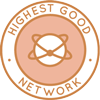 One Community is creating sustainability as a foundation for luxury community living through open source Highest Good Network® software that is a web-based application for collaboration, time tracking, and objective data collection. The purpose of the Highest Good Network is to provide software for internal operations and external cooperation. It is being designed for global use in support of the different countries and communities replicating the One Community sustainable village models and related components.
One Community is creating sustainability as a foundation for luxury community living through open source Highest Good Network® software that is a web-based application for collaboration, time tracking, and objective data collection. The purpose of the Highest Good Network is to provide software for internal operations and external cooperation. It is being designed for global use in support of the different countries and communities replicating the One Community sustainable village models and related components.
- Learn about our open source community collaboration and management software: The Highest Good Network
This week, the core team continued their work on the Highest Good Network PRs testing, confirming the fixed PRs and resolving several issues. They focused on HGN PR testing, confirming fixes for multiple issues, providing feedback on the Highest Good Food Summary graphics, and offering suggestions for text and image updates. In HGN, they tested several pull requests (PRs), confirming fixes for the leaderboard time-off indicator (PR2611), the Reports > Team Member page layout on small screens (PR2790), and the implementation of a default error page with proper redirection (#2685). They also tested the project details page (#2840) on the development branch, noting that the project name was correctly displayed at the top of the “Project Dashboard” screen. As the team moves forward, the integration of sustainability as a foundation for luxury community living becomes increasingly crucial in ensuring long-term success and alignment with modern environmental values. Issues identified included dark mode not functioning on both the main and development branches and incorrect formatting of the “Members working on site today” table on mobile screens in the Project Dashboard. Additionally, dark mode did not work on the applications landing page (#2875+1152), and the “Select from Categories” menu overlapped the “Welcome” dropdown list. They assigned five new tasks to volunteers, tested a reported issue with the Edit button on the Badge Development page (finding no issue on the main branch), and reported a new bug related to the search user functionality on the User Management page. We continue to focus on sustainability as a foundation for luxury community living that works for everyone through iterative improvements and user-centric solutions. See the Highest Good Society and Highest Good Network pages for more on how this relates to sustainability as a foundation for luxury community living. The collage below shows some of their work.
ALPHA SOFTWARE DEVELOPMENT TEAM
The Alpha Team’s summary, covering their work on the Highest Good Network software, was managed by Lin Khant Htel (Frontend Software Developer) and includes Carlos Gomez (Full-Stack Software Developer), Rupa Rajesh Bhatia (Software Engineer), Sheetal Mangate (Software Engineer), and Sujith Reddy Sudini (Full-Stack Software Developer). The Highest Good Network software is a foundation of what we’ll be using to measure our results of sustainability as a foundation for luxury community living. This week, Lin reviewed and approved PR #2949, gaining further knowledge of the codebase and testing changes locally, with all six test cases passing. He also reviewed weekly summaries, photos, and videos submitted by Alpha team members, assigned new tasks, and managed overall team responsibilities by updating task hours as needed.
Carlos received a request from Jae to redo pull request #1128 in the backend repository due to existing issues. He began recoding emailController.js and emailSender.js and submitted a new pull request (#1185). Three conflicts in emailController.js were resolved by maintaining the original code from the development branch and integrating it into the “Carlos anniversary celebrated” branch. After adapting his code, Carlos enabled functionality to send emails to users with anniversaries. Pull request #1128 is now clean, conflict-free, and ready for review. Carlos’s contribution to enhancing backend functionality aligns with the broader goal of sustainability as a foundation for luxury community living, as the system he developed aims to provide a more efficient and personalized experience for users, which can eventually support eco-conscious, high-end living environments by optimizing communication and user engagement.
Rupa worked on refining and styling the user interface for all pages of the multi-step form project, ensuring responsiveness and consistency using custom CSS. She integrated interactive elements like range sliders, text inputs, checkboxes, and dropdown menus. Navigation between pages was established with React Router for smooth transitions and state preservation. Her work reflects a commitment to crafting innovative solutions that seamlessly incorporate sustainability as a foundation for luxury community living. Rupa also implemented form validation, custom input boxes for digital signatures, and participation preferences. Additionally, she reviewed the summaries of Carlos, Sheetal, and Sujith, pinpointing areas for operational efficiency and analyzing Lin’s summary to identify strategies for improving development practices. Her approach not only enhanced functionality but also laid the groundwork for integrating sustainable practices into development initiatives, emphasizing sustainability as a foundation for luxury community living.
Sheetal focused on reviewing the code for the JS file and studying JEST documentation to identify areas for improvement and ensure comprehensive scenario testing. She created a pull request for the JS file and reviewed the HGN Phase III documentation to plan the next steps for upcoming work. Sujith worked on implementing the “Request Resources” feature in the Highest Good Network App. He focused on developing JavaScript functionality, routing it appropriately, and progressing with the CSS design. See the Highest Good Society and Highest Good Network pages for more on how this relates to sustainability as a foundation for luxury community living. The collage below shows a compilation of the work from this team.
BINARY BRIGADE SOFTWARE DEVELOPMENT TEAM
The Binary Brigade Team’s summary overseeing advancements in the Highest Good Network software was managed by Vijay Anand Pandian (Full Stack Software Engineer) and includes Aaryaneil Nimbalkar (Software Developer), Anirudh Sampath Kumar (Software Developer), Ashish Nagaraju (Software Engineer), Deepthi Kannan (Software Engineer), Geeta Matkar (Software Engineer), Samman Baidya (Software Engineer), Sandhya Adavikolanu (Software Developer) and Sriram Seelamneni (Software Engineer). The Highest Good Network software is how we’ll be managing and objectively measuring our process for sustainability as a foundation for luxury community living through our social architecture, construction, production, and maintenance processes.
This week, Aaryaneil focused on reviewing the Sentry API documentation to identify use cases relevant to the organization. He created a workflow to automate member management processes, including inviting and removing members using the API. His initial coding efforts centered on automating member invitations by implementing API calls with error handling and addressing issues in the existing invitation functionality. He also wrote code to automate the removal of members via the API and tested it in a local environment. In these efforts, Aaryaneil seamlessly incorporated sustainability as a foundation for luxury community living, ensuring that the solutions align with both innovation and environmental consciousness. Testing was constrained by API limitations on the free version, prompting him to plan a request for elevated permissions for the organization account. Anirudh focused on reviewing and testing multiple pull requests in the HighestGoodNetworkApp repository, including PRs 2885, 2886, 2955, 2888, 2940, 2907, 2951, 2964, 2889, and 2926.
As organizations increasingly prioritize sustainable practices, it becomes imperative to integrate sustainability as a foundation for luxury community living, ensuring that future developments harmonize with both environmental values and community needs. He also began initial work on addressing an issue related to the project delete modal not functioning properly in dark mode, associated with PR 2887, despite the task not being officially assigned. The issue occurs when attempting to archive a project in dark mode, causing the modal to appear in light mode instead. He identified the source of the problem and is reviewing the relevant dark mode code to determine a resolution. In the broader context of these technical advancements, the integration of sustainable practices into urban development remains paramount, as sustainability as a foundation for luxury community living offers an innovative approach to meeting modern environmental and societal needs.
Ashish worked on resolving a merge conflict for a previously raised PR 2882 and merged it. He then began working on phase 2, focusing on Bug 21. Initially, there were challenges in understanding the requirements, which were clarified after reaching out to Jae, who provided a video for reference. Time was spent reviewing the video, analyzing the code, and gaining a clearer understanding of the issue. In addition to technical challenges, it is essential to recognize the growing importance of sustainability as a foundation for luxury community living, which increasingly defines the criteria for modern, environmentally-conscious developments. Deepthi worked on improving the leaderboard header by addressing specific issues to enhance its functionality and appearance. She came up a new perspective of using abbreviations for the headers instead of the vertical alignment that was suggested.
She also made updates to the weekly summaries page, focusing on fixing the overall alignment. In addition, Deepthi resolved merge conflicts in existing Pull Requests, ensuring they were addressed effectively and prepared for merging. Geeta pulled the code from the original pull request on GitHub and executed it on a local machine. While running the code, few errors were encountered and resolved. Time was spent understanding the code and making modifications to adjust the header text alignment to be centered for small screen sizes. Ashish, Deepthi, and Geeta’s collaborative efforts on resolving merge conflicts and enhancing functionality in their respective tasks were exemplary, with an underlying focus on sustainability as a foundation for luxury community living, ensuring that their work not only meets immediate technical needs but also aligns with long-term values of environmental and social responsibility.
Samman began by reviewing the development team’s documents to understand the outlined steps and processes. After familiarizing himself with the guidelines, he reviewed the unit-testing documents to learn the specific procedures described. He then examined the Phase II and Phase III documents to identify a suitable task and was subsequently assigned to one of his selections. In this approach, Samman remained mindful of sustainability as a foundation for luxury community living, ensuring that his choices aligned with long-term, eco-conscious goals. Following the assignment, Samman initiated work on the task and continued making progress on it. Sandhya addressed an issue with the TaskCompletedBarChart component on the Total Org Summary page, where volunteer statistics data failed to load, resulting in a “Failed to load data” error. She began by reviewing the front-end code to confirm that the API endpoint URL was dynamically sourced from the environment file and that the Axios request was correctly structured with necessary query parameters. Sustainability as a foundation for luxury community living is crucial, especially when addressing the integration of modern technological solutions like API services that ensure seamless user experiences.
After verifying that the front end was not the source of the problem, she tested the API endpoint using tools such as Postman and a web browser, identifying an “Unauthorized request” error caused by a missing authentication token. She analyzed the backend authentication workflow and determined that the absence of authorization headers in the front-end API request was the root cause. Sandhya documented her findings, detailing the endpoint’s behavior and error response, and collaborated with the backend team to address the issue. After backend updates were made, she updated the front-end code to include the required authorization headers, tested the solution to ensure proper functionality, and integrated the TaskCompletedBarChart component. This approach, underpinned by sustainability as a foundation for luxury community living, not only resolved the technical issue but also aligned with the broader vision of integrating technology in a manner that promotes both efficiency and environmental responsibility. She also refined the code to meet project standards and submitted a pull request containing the updated code, testing results, and documentation.
Sriram focused on enhancing the backend functionality for sorting inventory data on the Projects page. He worked on implementing the inventoryModifiedTime field, ensuring it integrates seamlessly with the sorting logic. As part of his contributions, he emphasized sustainability as a foundation for luxury community living, ensuring that the sorting functionality aligns with environmentally-conscious standards. Sriram created and pushed new pull requests with the necessary backend updates and supporting functions, enabling the sorting functionality for the Projects table. Additionally, he contributed to the permissions toggle task, making progress on both initiatives. Vijay focused on adding unit test case implementations for several files within the HGN software project. He completed tests for the dashboardActions file (PR #2955), the userProjects file (PR #2964), and the followUpActions file (PR #2966). Additionally, he worked on implementing unit tests for the followUpActions file to enhance its functionality. These tasks contributed to strengthening the project’s overall test coverage and code reliability. See the Highest Good Society and Highest Good Network pages for more on how this relates to sustainability as a foundation for luxury community living. View some of the team’s work in the collage below.
BLUE STEEL SOFTWARE DEVELOPMENT TEAM
The Blue Steel Team’s summary, presenting their work on the Highest Good Network software was managed by Howie Miao (Software Engineer, Team Manager) and includes Cillian Ren (Software Engineer), Nazanin Hashemian (Software Developer), Ramakrishna Aruva (Software Engineer), and Supriya Sudini (MERN Stack Developer). The Highest Good Network software is how we’ll be managing and objectively measuring our process for developing sustainability as a foundation for luxury community living through our social architecture, construction, production, and maintenance processes. This week, Howie concentrated on management responsibilities, coordinating with team members to finalize a weekly meeting schedule. Following discussions with Jae, a meeting time was aligned with the assistant manager to resolve scheduling conflicts. On the development side, he worked on a hotfix for link requirement submissions and addressed a system date-time log bug.
Ramakrishna identified a new task for contribution after completing his current work and formally requested its assignment. He addressed review feedback on his pull request by investigating an issue where data for inactive and deleted states was not updating immediately. His initial attempt to optimize the Redux action logic caused test case failures, so he implemented an alternative solution by updating the data directly in the component, which resolved the problem. He also began work on adding a report icon to the tasks page by creating a branch and analyzing the codebase for required changes. In parallel, his focus on user-centric design, especially in enhancing the functionality of the tasks page, reflects a broader vision that aligns with sustainability as a foundation for luxury community living, ensuring that technological advancements harmonize with long-term ecological and societal goals.
Nazanin worked on issues in the WeeklySummariesReport.jsx file and related functionality, reverting backend changes that caused frontend loading issues using git restore and removing untracked files with git clean -fd to restore functionality. She reviewed the bio status filtering logic to ensure it aligned with criteria requiring at least 80 tangible hours logged and 8 valid weekly summaries. Investigations involved the filterWeeklySummaries function, examining conditions related to isBio, isMeetCriteria, summary.validWeeklySummaries, totalTangibleHrs, and bioPosted. She analyzed the WeeklySummariesReport.jsxin the project directory, and used git log commands to identify relevant commits, including PR #823 introducing bio status functionality. Ramakrishna’s proactive approach in optimizing data updates and resolving complex issues within the codebase mirrors the growing trend in urban development where sustainability as a foundation for luxury community living is increasingly being recognized as a critical principle for creating harmonious, eco-conscious environments that blend modernity with environmental responsibility.
Cillian reviewed and implemented changes in the preview pull request while addressing feedback and ensuring the adjustments met project requirements. He communicated with team members to clarify responsibilities and resolve misunderstandings regarding the scope of changes, maintaining alignment with project goals. His approach was rooted in strategic foresight, ensuring that the proposed modifications not only enhanced operational efficiency but also integrated a commitment to sustainability as a foundation for luxury community living. Supriya developed a persistent dropdown menu for the application header, displaying a list of project items that remains accessible across different sections of the application. Each item in the dropdown links to a specific page, enhancing navigation and user interface consistency. This involved modifying the navigation framework and routing logic to integrate the feature effectively, ensuring usability across the application. See the Highest Good Society and the Highest Good Network pages to learn more on how their work contributes to developing sustainability as a foundation for luxury community living. See below to view images of their work.
CODE CRAFTERS SOFTWARE DEVELOPMENT TEAM
The Code Crafters Team, covering their work on the Highest Good Network software, was managed by Swaroop Udgaonkar (Software Engineer) and includes Anoushka Gupta (Software Engineer), Ashrita Cherlapally (Software Engineer), Denish Kalariya (Software Engineer), Dhrumil Dhimantkumar Shah (Software Engineer), Humera Naaz (MERN developer), Muhideen Mustapha (Software Engineer), Pavan Swaroop Lebakula (Software Engineer) and Pratyush Prasanna Sahu (Software Engineer). The Highest Good Network software is how we’ll manage and objectively measure our process for sustainability as a foundation for luxury community living through our social architecture, construction, production, and maintenance processes.
This week, Swaroop pulled the latest changes from PRs 2475 and 1038 to ensure alignment with the updated codebase. He worked on debugging an issue where the manual infringement reason was not reflecting on the frontend, even though it appeared in backend logs. Additionally, he explored alternative methods for arranging the people list on smaller screens, particularly iPads, to optimize placement and display. His efforts align with the broader vision of sustainability as a foundation for luxury community living, which emphasizes creating seamless digital experiences that complement eco-conscious design principles. Pratyush created a new file named TestEventReg to facilitate event registration functionality. He added fields including event name, first name, last name, gender, address, state, country, and phone number, ensuring alignment with the requirements. Error handling was implemented for all fields to validate user inputs and maintain data integrity. As part of the next steps, he is preparing to handle the captured values and integrate them with the backend to ensure seamless data flow and processing. Pavan worked on adding a title column next to the role column, focusing on features such as making it editable, implementing querying back to the database, enabling search functionality, and managing permissions. In line with the broader vision of building systems that reflect sustainability as a foundation for luxury community living, he is currently addressing the task of narrowing the role column to meet specific requirements and has requested Jae to create a separate task for this effort.
Muhideen continued work on the task of displaying badges assigned to all users, with updates made to the badges schema to include a users array that tracks individuals associated with each badge. Various HTTP methods were written to automate the inclusion of new users into the array and to populate the array with data from the existing database. This ensures that users tied to specific badges can now be extracted and displayed on the badge management page. The project’s focus emphasizes sustainability as a foundation for luxury community living, ensuring that long-term ecological and social benefits are integrated into high-end residential environments. Humera focused on addressing key issues related to streak tracking and badge updates. The work included investigating and fixing the “Streak Break and Reassignment” issue, where streaks were incorrectly reassigned, and the “Overlapping Streak Issue,” which caused overlapping data for hours worked across weeks. Additionally, efforts were made to resolve the “Badge Update Issue,” which involved a scenario where consecutive hour streaks, such as [30, 30, 30, 40, 40], were not updating correctly; specifically, 30 hours across three weeks were incorrectly replaced by 40 hours in two weeks, resulting in an incorrect streak of 40 hours in one week. In line with the principle of sustainability as a foundation for luxury community living, she also analyzed the “Incomplete Streak Drop-off” issue and reviewed a specific condition for badge updates, identified as being in the wrong section of the code, to ensure proper placement and functionality. These tasks aimed to enhance the accuracy of streak tracking and badge updates in the system. Dhrumil worked on addressing issue 199, which involves fixing the inaccuracies in the “Projects With Completed Hours” section of the People Report and identified the need for additional access to complete the task. Additionally, he contributed to the team’s progress by reviewing pull requests submitted during the week.
Denish updated the getVolunteerNumberStats function to include comparisonPercentage fields for active, new, and deactivated volunteers, providing the ability to compare current and past periods for these metrics. He also worked on Phase 3 development, focusing on replicating Phase 2 functionalities while implementing a hidden, password-protected entry point. This entry point ensures only active users in the “Main” system can access it and integrates with the existing password login mechanism used in the main platform. These tasks addressed both analytics enhancements and security requirements for ongoing project development. Moreover, as urban living continues to evolve, integrating sustainability as a foundation for luxury community living will become a pivotal factor in shaping future residential designs. Ashrita made further progress on the task of displaying badges assigned to users. She has updated the badge schema to include a users array, which tracks the individuals linked to each badge. To automate the process, several HTTP methods were created to add new users to this array, as well as to populate it with data from the existing database. As a result, the system can now retrieve and display the users associated with each badge on the badge management page, reflecting sustainability as a foundation for luxury community living through its streamlined, eco-conscious design principles.
Anoushka continued working on implementing an API for job title suggestions, allowing users to receive suggestions as they type. She also developed a reset filters function, which clears the search filters, reloads the job listings, and sorts them by title, date posted, and featured status. Pagination logic was implemented for job listings and summaries to handle large datasets and provide page-wise results. She also made improvements to the job summaries API by including sorting based on multiple criteria. Additionally, she started investigating and implementing frontend features related to these APIs. See the Highest Good Society and Highest Good Network pages for more on how this relates to sustainability as a foundation for luxury community living. View some of the team’s work in the collage below.
DEV DYNASTY SOFTWARE DEVELOPMENT TEAM
The Dev Dynasty Team’s summary, covering their work on the Highest Good Network software, was managed by Jatin Agrawal (Software Engineer) and includes Mrinalini Raghavendran (Software Engineer), Nikita Kolla (Full Stack Developer) and Shreya Vithala (Software Engineer). The Highest Good Network software is how we’ll manage and objectively measure our process for sustainability as a foundation for luxury community living through our social architecture, construction, production, and maintenance processes.
This week, Jatin focused on resolving issues outlined in PR#2928 on the HighestGoodNetworkApp Repository. He was assigned a new task to integrate the HGN form with the HGNApplication, coordinating with existing PRs related to the HGN form. Additionally, he designed a workflow to link the form to the main app, which is prepared to be submitted as a PR soon. Mrinalini focused on refining and expanding the requirements document, incorporating Jae’s input and functionalities from the original requirements, such as wish lists and winning bid processing. She also created mockups for login and registration workflows and reformatted the document to align with updated requirements, ensuring the system’s evolution aligns seamlessly with sustainability as a foundation for luxury community living.
Nikita resolved a bug in the image posting feature and refined the UI for displaying user posts on the Highest Good Network app, ensuring the interface met functional and user requirements, and reviewed updates for issues. Shreya designed a Figma prototype for the HGN Survey Dashboard, wrote unit tests for the Add Task Modal component, and finalized a detailed PR request. She also managed and approved changes for PR #2714, contributing to the project’s smooth progress. See the Highest Good Society and Highest Good Network pages for more on how this relates to sustainability as a foundation for luxury community living. View some of the team’s work in the collage below.
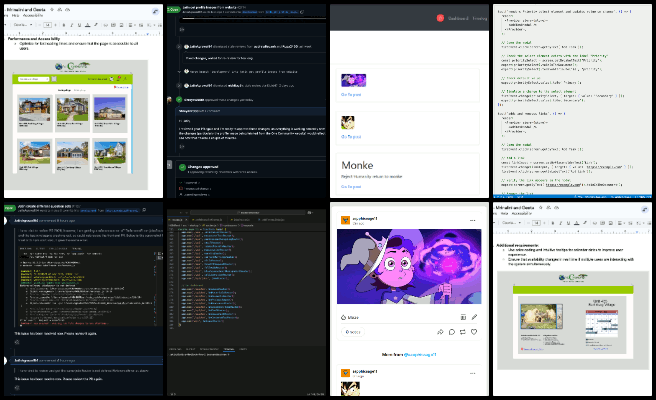
EXPRESSERS SOFTWARE DEVELOPMENT TEAM
The Expressers Team’s summary, covering their work on the Highest Good Network software, was managed by Christy Guo (Software Engineer) and includes Faye Lyu (Software Engineer), Reina Takahara (Software Developer), and Strallia Chao (Software Engineer). The Highest Good Network software is how we’ll manage and objectively measure our process for sustainability as a foundation for luxury community living through our social architecture, construction, production, and maintenance processes. This week, Christy’s summary includes updates from Faye, Strallia and Reina. Strallia resolved a task visibility bug, improved backend features for the Total Org Summary and Anniversaries components. Faye Lyu progressed in the HGN Software Development project, creating a new branch, and implementing data extraction logic. Shreya collaborated on Phase 1 Data Visualization designs and familiarized herself with GitHub workflows. See the Highest Good Society and Highest Good Network pages for more on how this relates to sustainability as a foundation for luxury community living. See the collage below to view the team’s work this week.
LUCKY STAR SOFTWARE DEVELOPMENT TEAM
The Lucky Star Team’s summary, covering their work on measuring sustainability as a foundation for luxury community living, of the Highest Good Network software, was managed by Anne Zhang (Software Engineer) and includes contributions from Chetan Sunku (Software Engineer), Koushica Bosadi Ulaganathan (Software Engineer), T R Samarth Urs (Data Analyst), Shefali Mittal (Volunteer Software Engineer), Yashwanth Pokala (Software Engineer) and Ziyan Wang (Software Engineer). This week, Chetan created a pull request (#2969) for a previous task and added a reference note to the HGN document for future use. He identified a UI bug related to the margin of a popup card and began working on its resolution. Koushica performed final testing and raised a pull request for a feature that triggers a bell notification when a user has completed less than 50% of their required hours with 48 hours remaining in the week, ensuring the notification resets upon being viewed or at the week’s conclusion. She reviewed a pull request addressing the “End Date” field’s updates when the “Set Final Day” option is used and verified its formatting in light and dark modes. Notably, their efforts collectively underscore the importance of sustainability as a foundation for luxury community living, seamlessly integrating functionality with refined user experience.
Samarth’s leadership in managing the PR review team and summarizing their contributions in a visually engaging blog post aligns seamlessly with the project’s overarching vision, sustainability as a foundation for luxury community living, demonstrating a commitment to fostering collaboration and innovation. Shefali focused on creating automatic Twitter posts by researching APIs for auto-scheduling and completed a task for adding test cases to the Volunteering Time tab, submitting a pull request (#2967) with the updates. Yashwanth submitted his resignation letter and worked on wrapping up his tasks, including implementing changes to the “Permission Log Table” and “Badge Deletion” tasks, pushing most updates to GitHub. Ziyan worked on aligning end dates between the User Management and Reports pages, implementing fixes while identifying a minor bug for further review. Anne addressed a bug causing “null null” values in dropdowns when managers accessed the Other Links section, managed the Lucky Star team’s photos, and submitted weekly reports and summaries. Learn more about how the Highest Good Society and Highest Good Network measures sustainability as a foundation for luxury community living in the Highest Good Network open source hub. See their work on the collage below.
MOONFALL SOFTWARE DEVELOPMENT TEAM
The Moonfall Team’s summary, covering their work on the Highest Good Network software was managed by Newell Newell (Manager), and includes Bhavya Prakash (Software Engineer), Calvin Liu (PR Team), Nikhil Giri (Software Engineer), Rachana Zha (Software Engineer), and Yili Sun (Software Engineer).
This week, Bhavya focused on learning Figma through instructional videos as preparation for joining the Figma team and revisited the lead badge issue multiple times without achieving the desired outcome. She did research on MongoDB, responded to comments on a document, and initiated work on a blog. Positioning sustainability as a foundation for luxury community living, she also explored innovative approaches to integrating environmental consciousness into her designs. Calvin worked on Bug 10 from the “HGN Phase I Bugs and Needed Functionalities” document and aimed to remove an unnecessary saving step in the “Quick Setup Tool” by modifying files like QuickSetupHandler.js, SetupConfigurator.jsx, and SaveUtils.js to improve the auto-save feature, while inspecting SetupStyles.css for interface responsiveness.
Newell documented various proposals in the HGN tasks proposal spreadsheet and finalized the Azure migration to reduce hosting costs. He investigated email providers such as Amazon SES and MailerLite. Additionally, he implemented critical hotfixes across the frontend and backend to address stability and functionality issues, ensuring a robust system that aligns with the principle of sustainability as a foundation for luxury community living. Nikhil resolved merge conflicts and rebased a branch with the development branch. He addressed conflicts manually and identified further modifications. Rachana worked on implementing gzip compression in an Express.js application to optimize response sizes by integrating the compression library. She modified middleware parameters, tested the changes locally, followed by creating a pull request for review. Yili refined permissions functionality for password resets while ensuring exclusion for Owner/Admin roles and tested the feature across user scenarios. She addressed validation errors caused by empty or improperly formatted “jobTitle” fields in the user profile system by analyzing data handling. See the Highest Good Society and Highest Good Network pages for more on how this relates to sustainability as a foundation for luxury community living. Below is a collage for the team’s work.
REACTONAUTS’ SOFTWARE DEVELOPMENT TEAM
Reactonauts’ Team’s summary, covering their work on the Highest Good Network software, was managed by Vijeth Venkatesha (Software Engineer) and includes Dhairya Mehta (Software Engineer), Gmon Kuzhiyanikkal (Software Engineer), Jinxiong You (Software Engineer), Khushi Jain (PR Team I-N), Nikhil Pittala (Software Engineer), Pallavi Thorat (PR Team O-Sh), Peterson Rodrigues (Full-Stack MERN Stack Developer), Rishitha Mamidala (Software Engineer), Sharadha Shivakumar (Software Engineer). This week, Dhairya worked on the “Fix Projects find user function” task and identified the root cause of issues affecting user discovery in the projects section. He developed a sort and search function to enhance user assignment processes. His efforts contribute to the broader goal of integrating advanced technology solutions to improve organizational functionality, all while emphasizing sustainability as a foundation for luxury community living.
Gmon addressed tasks related to hiding team member tasks with the teams toggle and implemented bell notifications for task deadlines. She created a pull request (PR #2850) for adding active/inactive numbers on the team page and prepared screenshots and videos for review. Jinxiong focused on identifying and resolving bugs in HGN Apps, including issues with a pop-up triggered by the reset time button and a blank screen in badge development. Khushi ensured the dropdown for “Complete” and “Remove Task” appears only when the resolve tasks permission is assigned. She reviewed and improved several pull requests by resolving logic issues in unit tests. Nikhil completed nine pull request reviews and contributed a unit test for error-handling logic in errorsActions.js, demonstrating how sustainability as a foundation for luxury community living could inspire error-handling frameworks designed for scalable and efficient code.
Pallavi implemented a wildcard search mechanism on the User Management page to support partial and full name matches. She aligned with her manager on Phase 3 action items. Peterson improved the User Profile page and Teams tab by enabling automatic saving of input codes with 5–7 characters. Rishitha worked on Phase Two of the Add Material form and corrected its structure. She added new fields to align with project requirements and implemented logic to display inactive users’ final activity on the Weekly Summaries Reports page. Sharadha implemented logic to display inactive users’ final activity on the Weekly Summaries Reports page. Vijeth focused on team management and resolved git conflicts. He reviewed Pallavi’s search improvements and addressed app slowdown issues caused by unnecessary API calls and null values in the “Other Links” section.See the Highest Good Society and Highest Good Network pages for more on how this relates to sustainability as a foundation for luxury community living . Below is a collage for the team’s work.
SKYE SOFTWARE DEVELOPMENT TEAM
Skye Team’s summary covering their work on the Highest Good Network was managed by Rishabh Rao (Administrator) and Luis Arevalo (Software Engineer) and includes Abi Liu (Software Developer), Laura Cohen (Software Engineer), Sai Preetham Dongari (Full Stack Developer), Snehal Dilip Patare (Software Engineer), and Yao Wang (Software Engineer). The Highest Good Network software is how we’ll manage and objectively measure our process for sustainability as a foundation for luxury community living through our social architecture, construction, production, and maintenance processes.
This week, Abi worked on refining the Volunteer Trends API by adding functionality to customize aggregation periods, offering monthly or weekly increments. He ensured these adjustments adhered to the API design and supported use cases, and he collaborated with teammates by addressing database design questions, including data structuring and query optimization, to improve development and data retrieval processes. His efforts reflect a commitment to integrating sustainability as a foundation for luxury community living, ensuring that the technological advancements align with broader environmental and societal goals. Laura resolved bugs and enhanced the permission change modal’s functionality and performance, addressing issues with role updates and permissions discrepancies by refining functions such as hasPermission and fetchPresetsByRole. She improved component rendering using React hooks and memoization, fixed a bug affecting checkbox state persistence, updated logic for modal opening and user permissions handling, and made temporary adjustments to facilitate testing for sustainability as a foundation for luxury community living.
Snehal worked on creating an API and user access token for Facebook by setting up a developer account linked to her personal account. She identified restrictions preventing content posting to personal profiles and requiring a business account for page creation and publishing. Yao continued developing the LinkedIn post feature and completed the setup for the post body to enable posting with media. He also developed a scheduling function for posts and is currently testing the functionalities for posting with videos and scheduling posts. With the basic features developed, integration with the front-end design will proceed after the testing phase is completed for sustainability as a foundation for luxury community living.
Sai Preetham added tracking management functionality to the front end below the user management section and pushed updates. He analyzed backend tracking management system code, focusing on permissions APIs to ensure accurate changes, reviewed API logic, validated modifications, monitored logs for debugging, identified gaps, and provided recommendations for improvement. He also examined the permissions system to understand operations and changes, reviewed logic, traced update propagation and identified dependencies. In parallel, he recognized the growing importance of integrating eco-friendly principles into modern design, emphasizing sustainability as a foundation for luxury community living. A new branch, SaiPreetham_Tracking_Management_backend, was created to implement backend functionality for tracking management, including a new endpoint for tracking data retrieval, integrated permissions checks, and updates to the userProfileController for fetching and validating tracking details. Additionally, he worked on the weekly summary and prepared Dropbox images summarizing the week’s work, emphasizing sustainability as a foundation for luxury community living to reflect the broader vision behind the project’s development.
Luis worked on publishing a pull request that introduced two new warnings to the codebase, enabling users to receive warnings and triggering email notifications. He informed Jae that his email-related pull request needed to be merged addressed the resulting merge conflicts, and resolved them to facilitate the merge. He finalized and raised the pull request for the two new warnings, identifying logging issues that he plans to address. See the Highest Good Society and the Highest Good Network pages to learn more about how their work contributes to sustainability as a foundation for luxury community living. See below for the work done by the group.
SOFTWARE PR REVIEW TEAM A-K
The PR Review Team’s summary for team members’ names starting with A-K and covering their work on the Highest Good Network software was managed by Saumit Chinchkhandi (Administrative Assistant and Software Engineer). The Highest Good Network software is a foundation of what we’ll be using to measure our results of sustainability as a foundation for luxury community living. This week’s active members of this team were: Abdelmounaim Lallouache (Software Developer), Carl Bebli (Software Engineer), and Kurtis Ivey (Full Stack Developer). They reviewed all the Highest Good Network PRs (Pull Requests) shared in this week’s update. Learn more about how the Highest Good Network measures and assists in sustainability as a foundation for luxury community living in the Highest Good Network open source hub. The collage below shows a compilation of the work from this team.
SOFTWARE PR REVIEW TEAM L-N
The PR Review Team’s summaries for team members’ names starting with L-N and covering their work on the Highest Good Network software was managed by Anoushka Hazari (Data Analyst). The Highest Good Network software is a foundation of what we’ll be using to measure our results for sustainability as a foundation for luxury community living. This week’s active members of this team were: Nahiyan Ahmed (Full Stack Software Developer), Nathan Hoffman (Software Engineer) and Neha Bogireddy (Software Engineer). They reviewed all the Highest Good Network PRs (Pull Requests) shared in this week’s update. Learn more about how the Highest Good Network will measure and assist in sustainability as a foundation for luxury community living in the Highest Good Network open source hub. The collage below shows a compilation of the work from this team.
SOFTWARE PR REVIEW TEAM Sh-Z
The PR Review Team’s summary for team members’ names starting with Sh-Z and covering their work on the Highest Good Network software was managed by Olawunmi “Ola” Ijisesan (Administrative and Management Support) and Samarth Urs (Administrative Assistant and Data Analyst). The Highest Good Network software forms the foundation for measuring our results in sustainability as a foundation for luxury community living. This week’s active members of this team were: Shraddha Shahari (Software Engineer) and Zhifan Jia (Software Engineer). They reviewed all the Highest Good Network PRs (Pull Requests) shared in this week’s update. Learn more about how the Highest Good Network measures and supports sustainability as a foundation for luxury community living by exploring the Highest Good Network open-source hub. The collage below shows a compilation of the work from this team.
AND WE PRODUCED THIS WEEKLY UPDATES BLOG – CLICK HERE TO SUBSCRIBE
FOLLOW ONE COMMUNITY’S PROGRESS (click icons for our pages)
INVESTOR PAGES
GET INVOLVED
DONATE | WAYS ANYONE CAN HELP | MEMBERSHIP
CLICK HERE FOR ALL PAST UPDATES
 One Community
One Community

